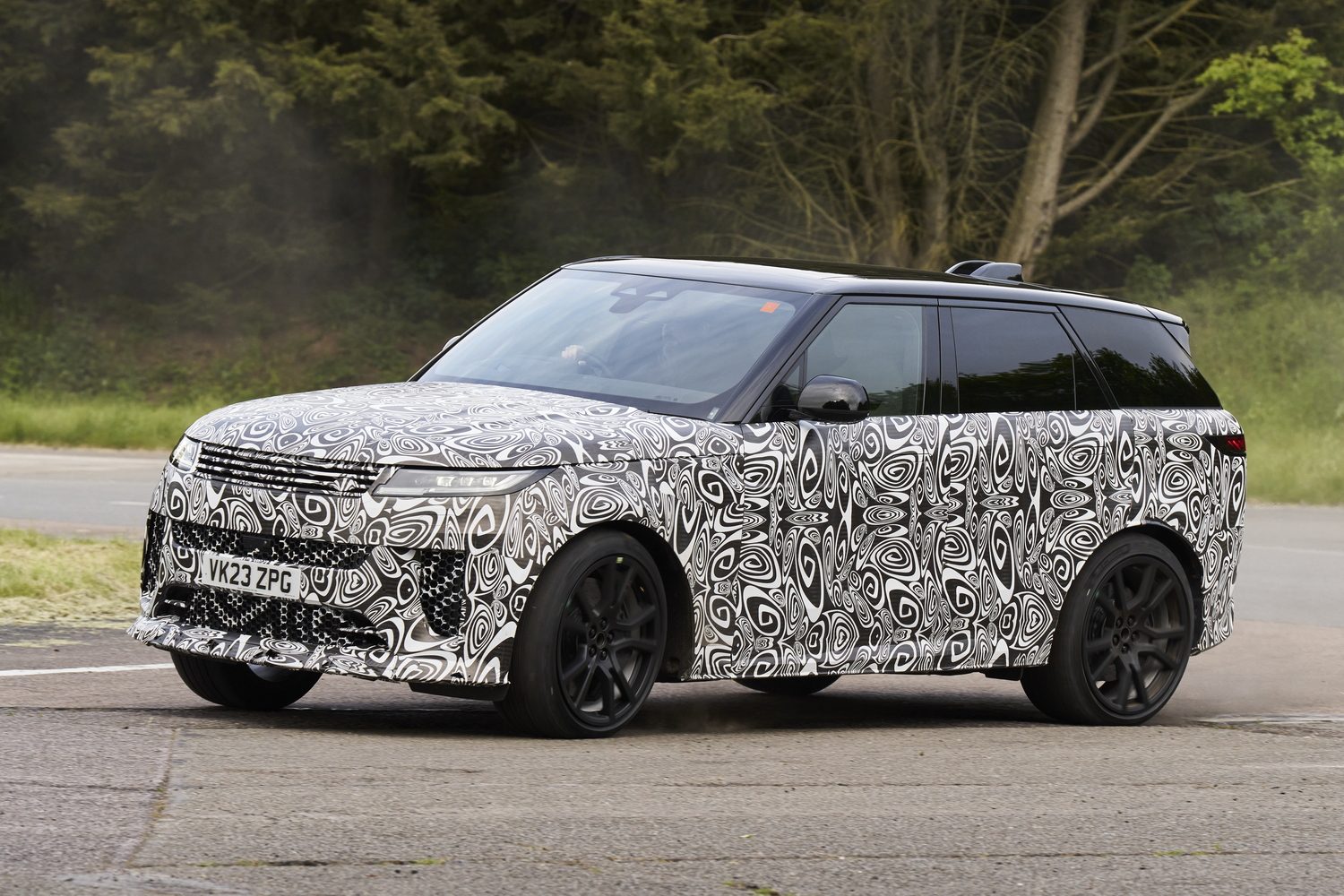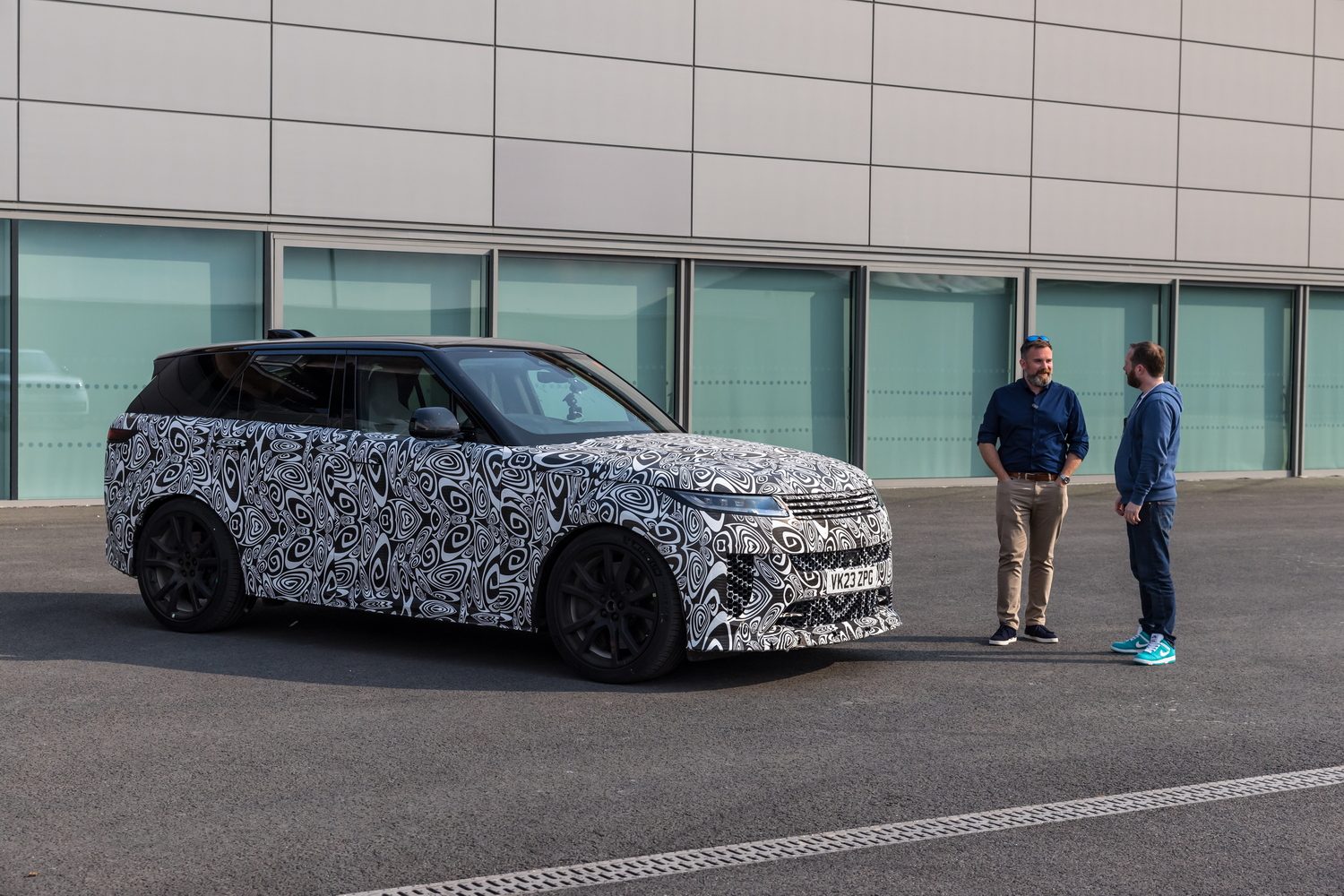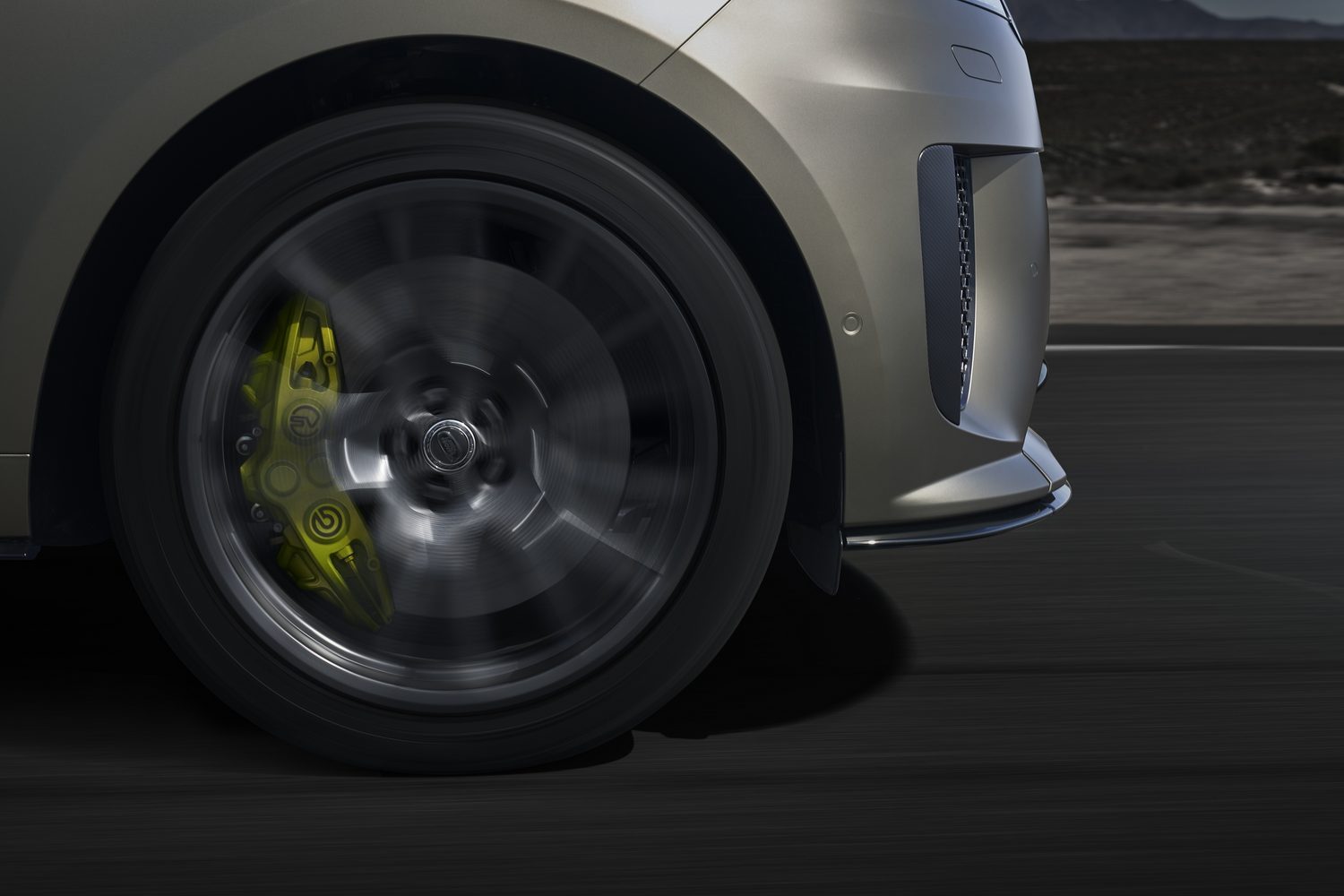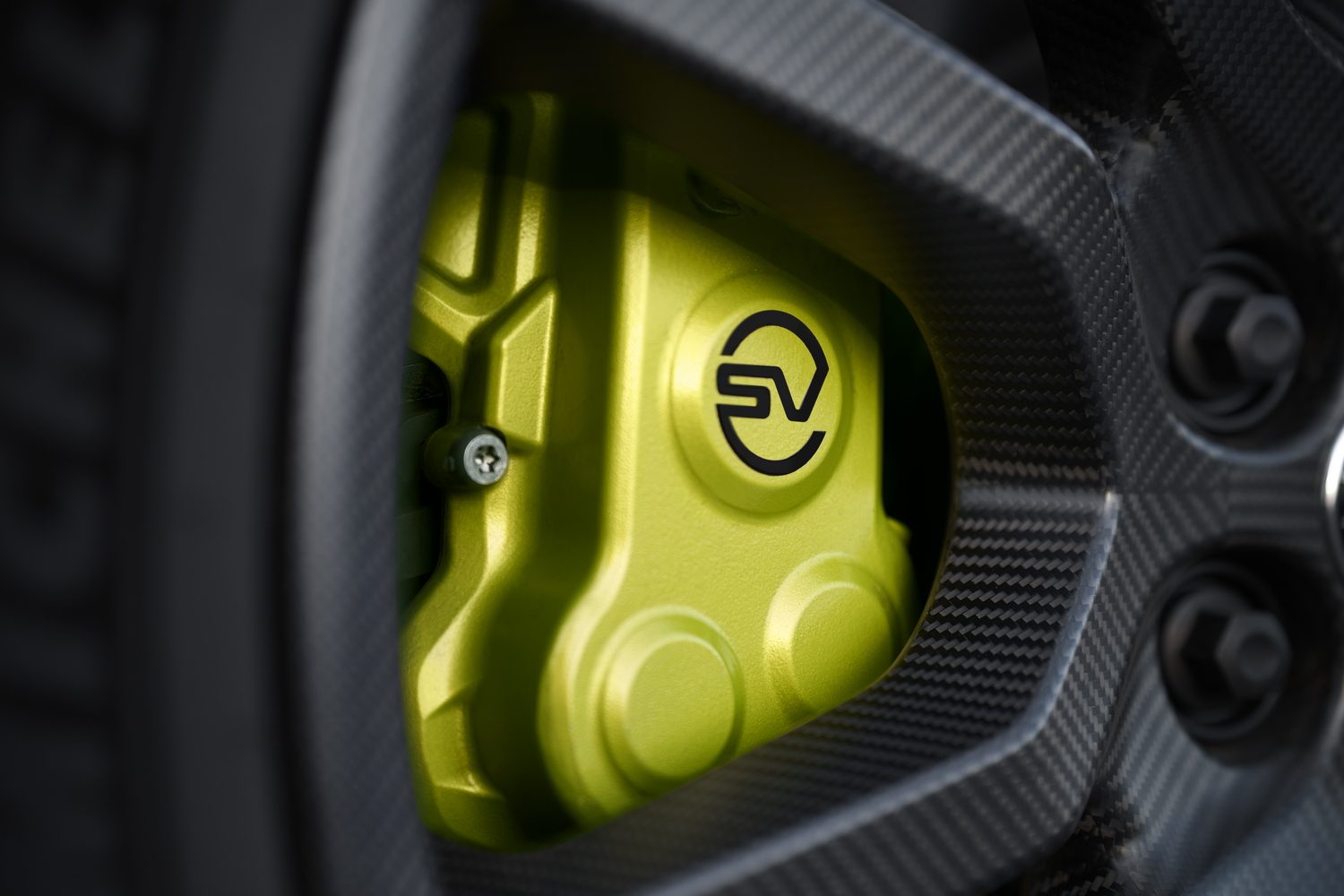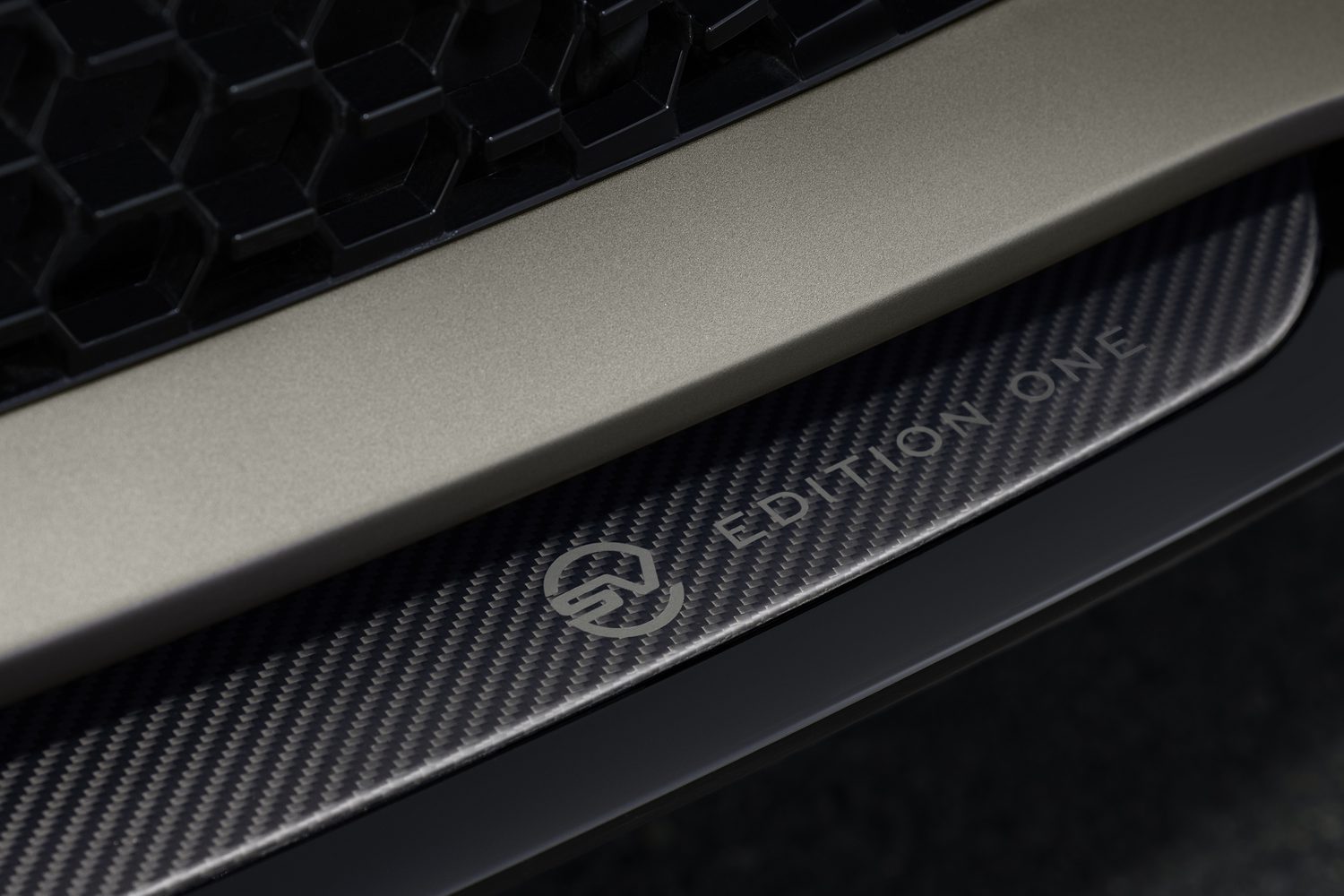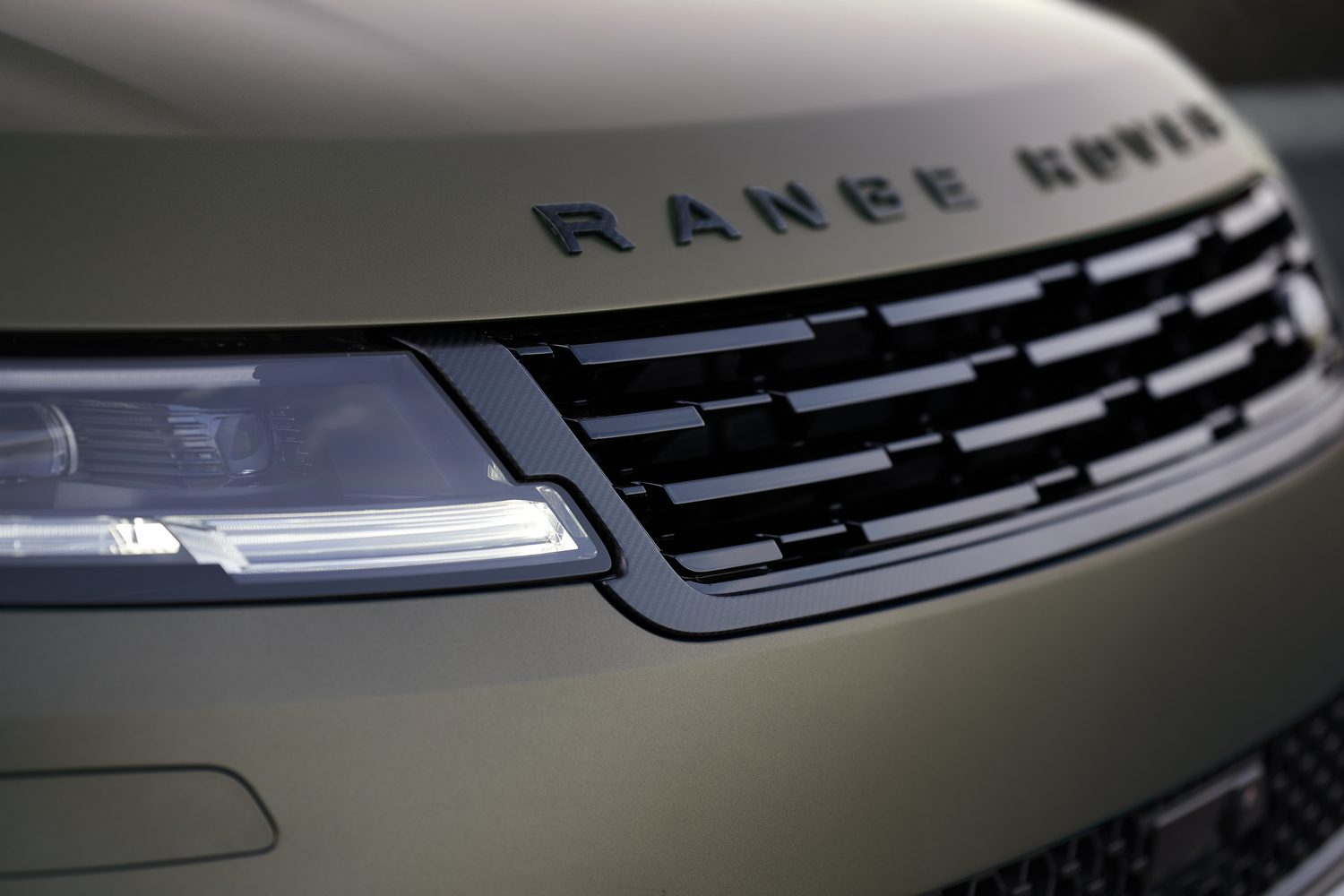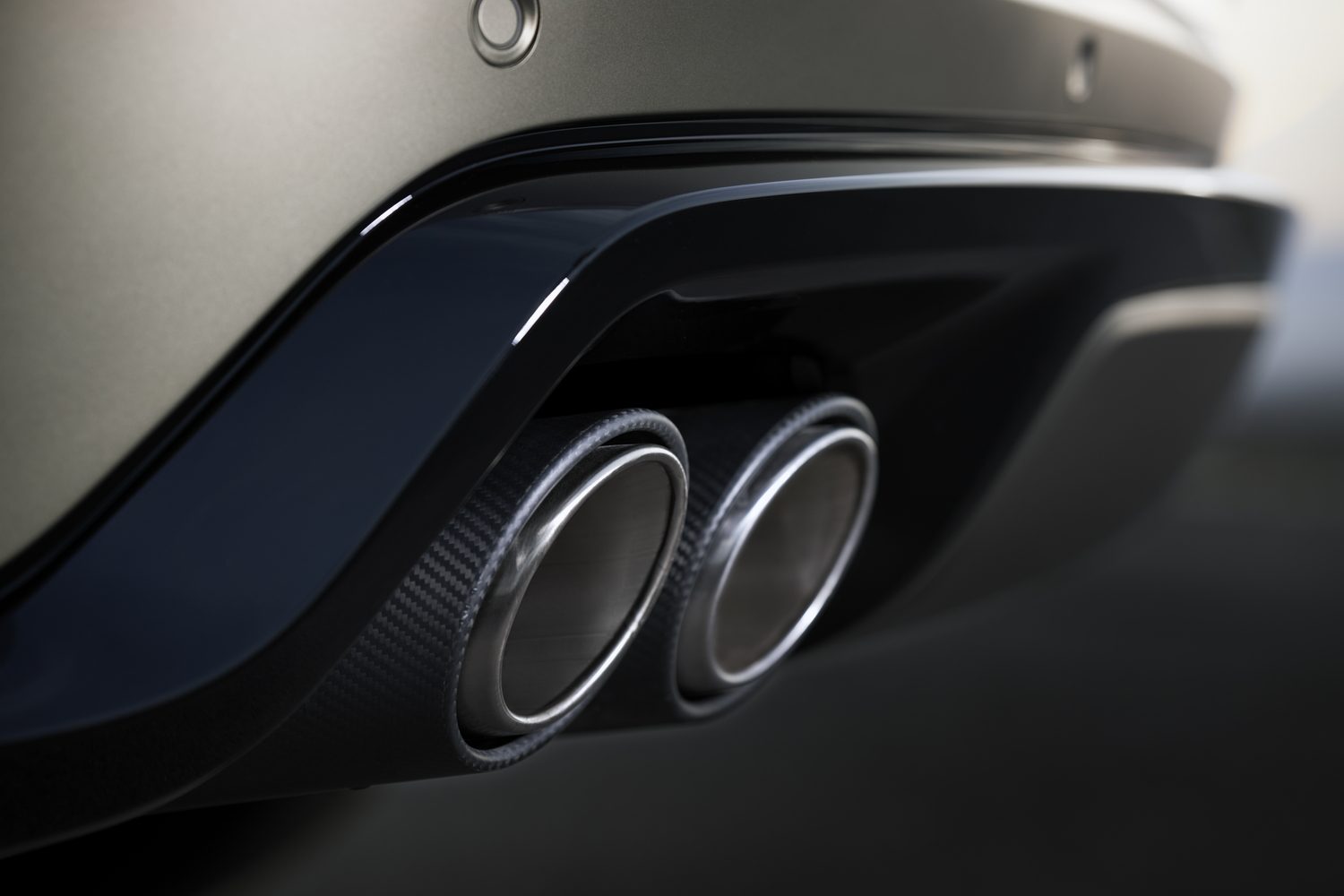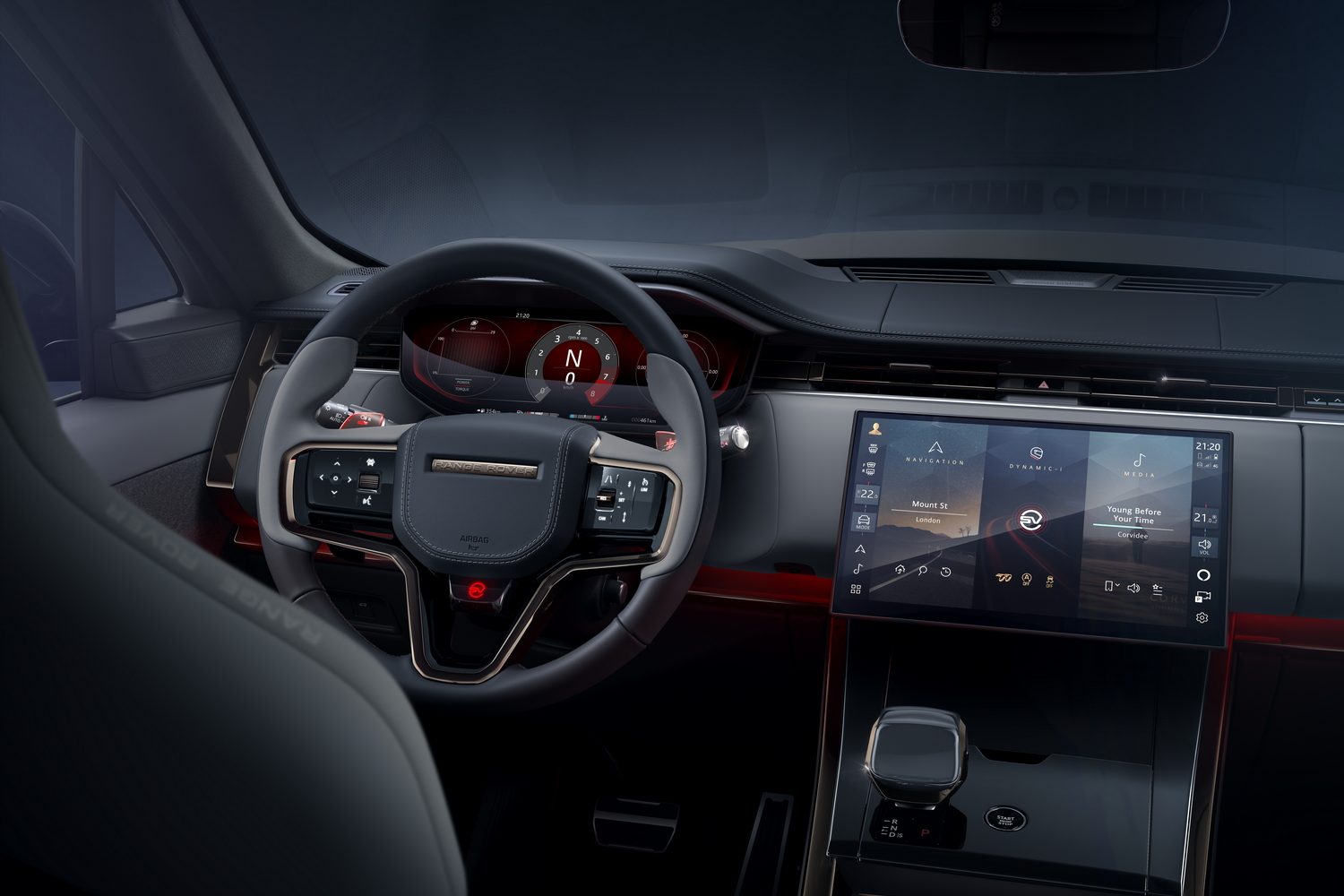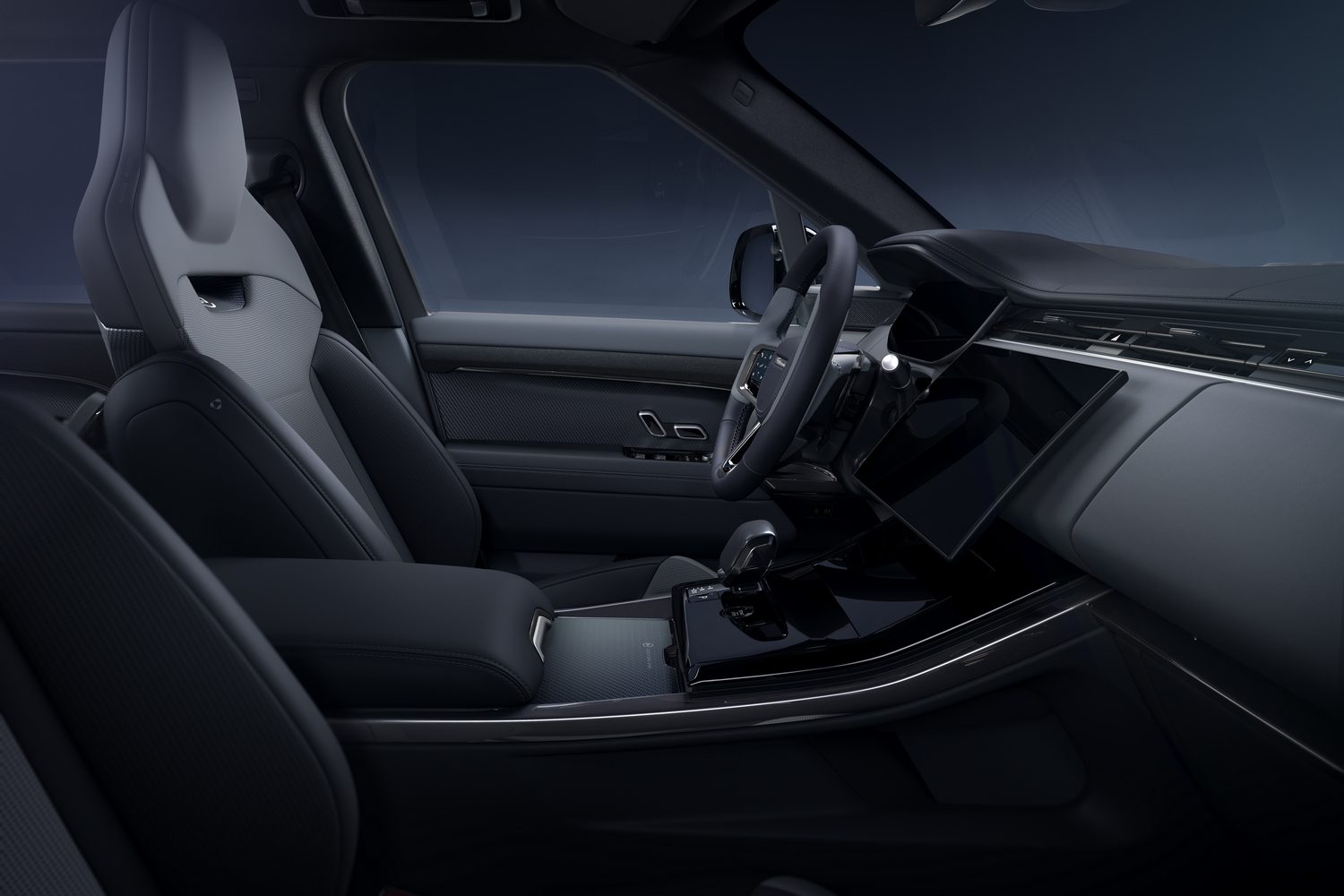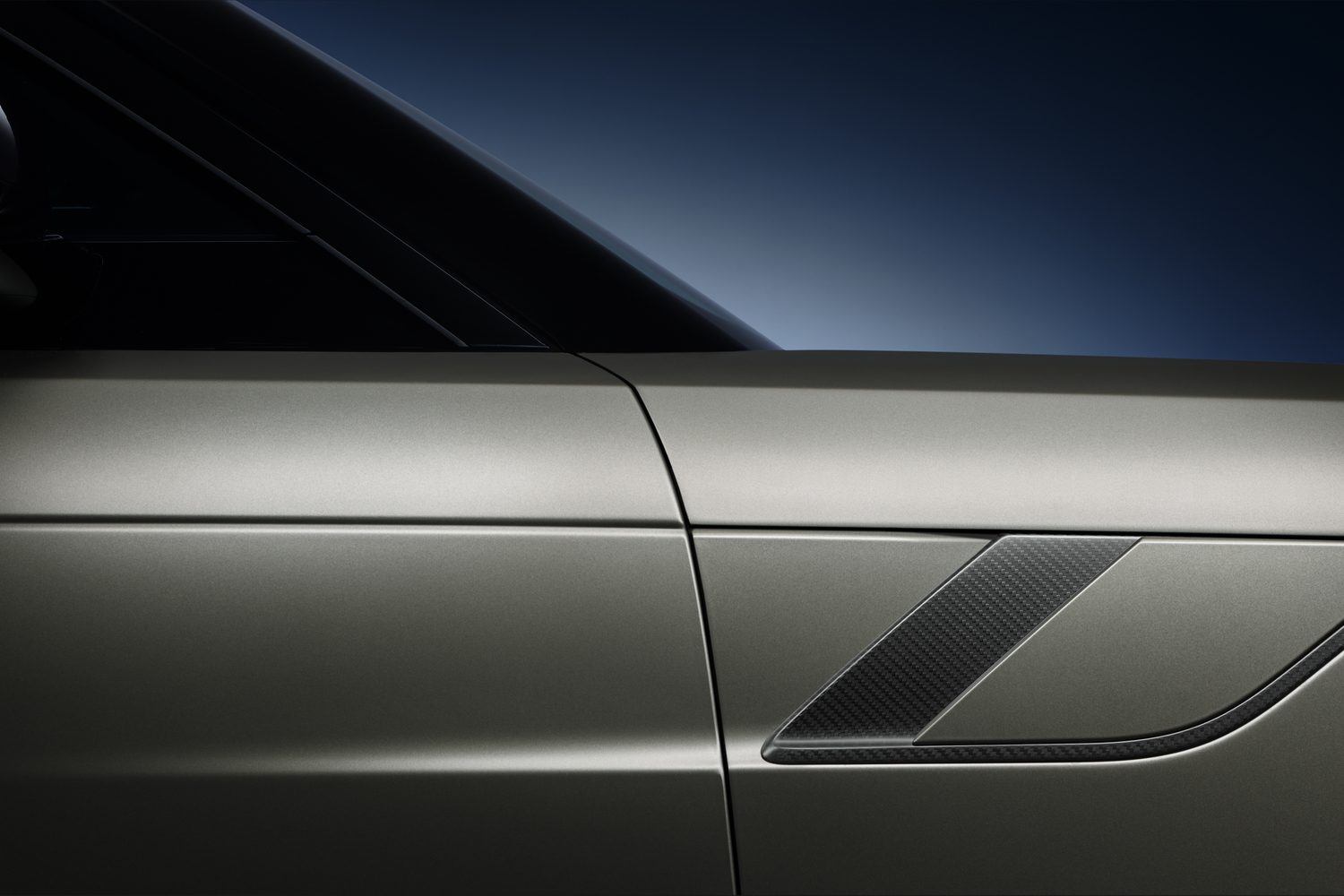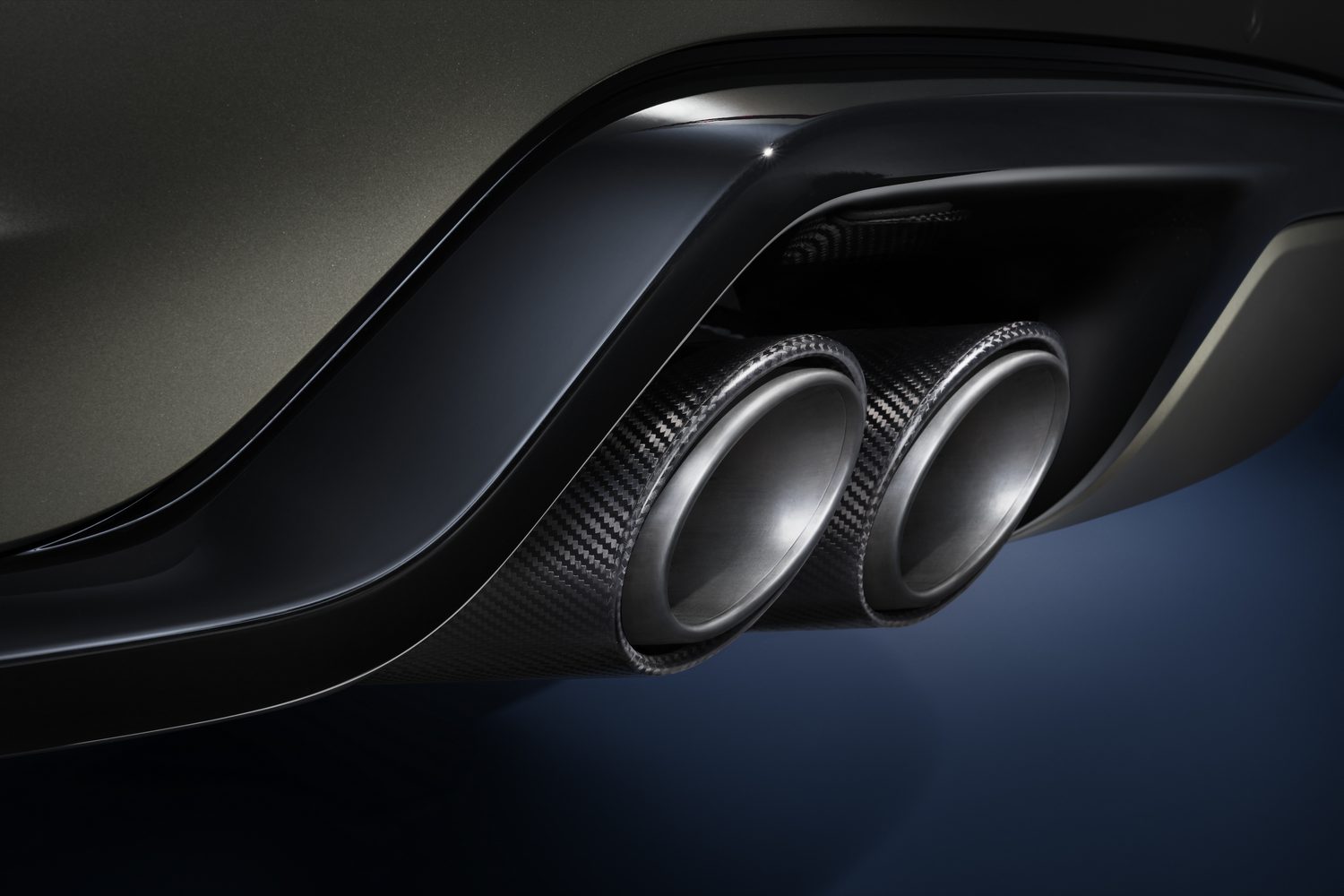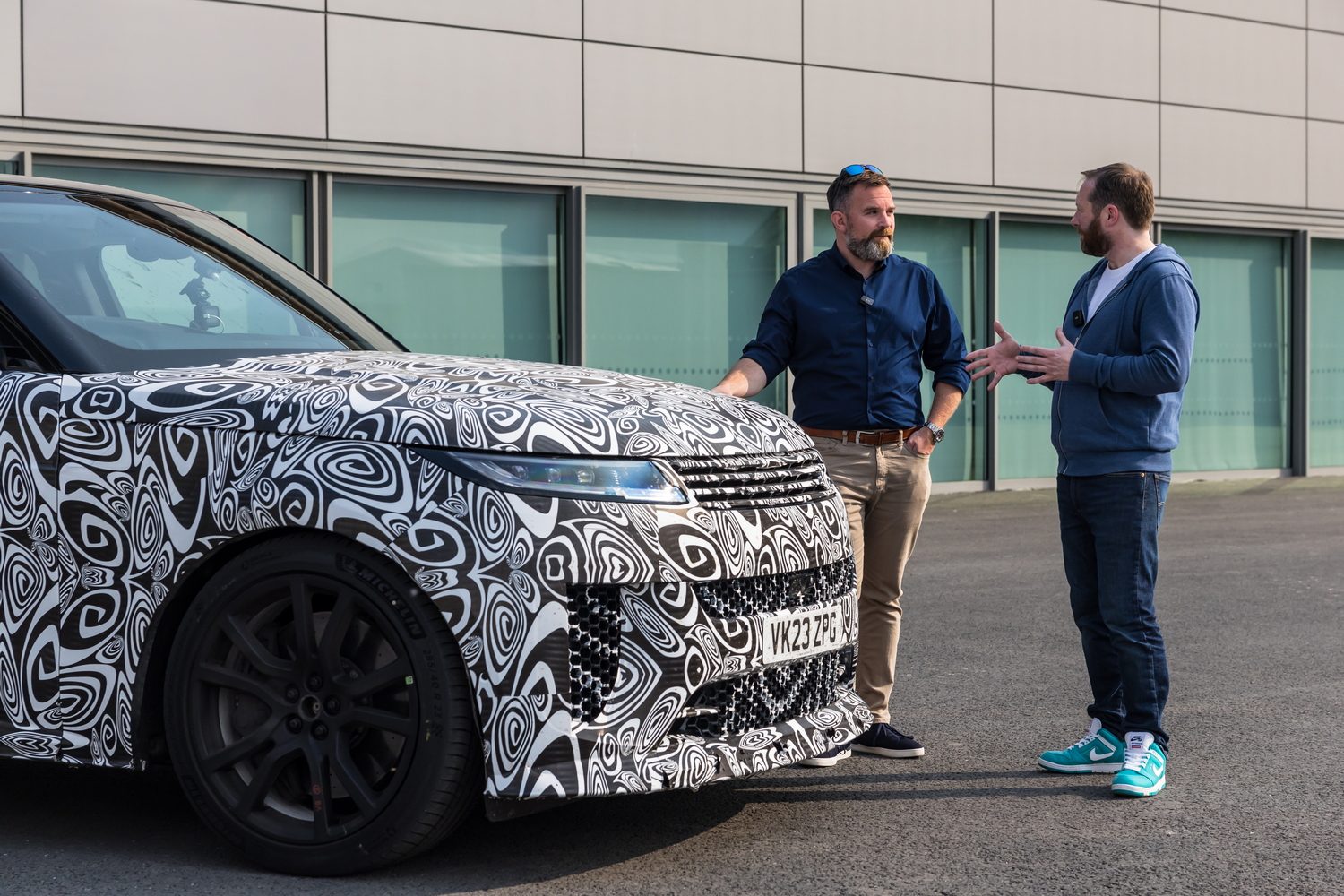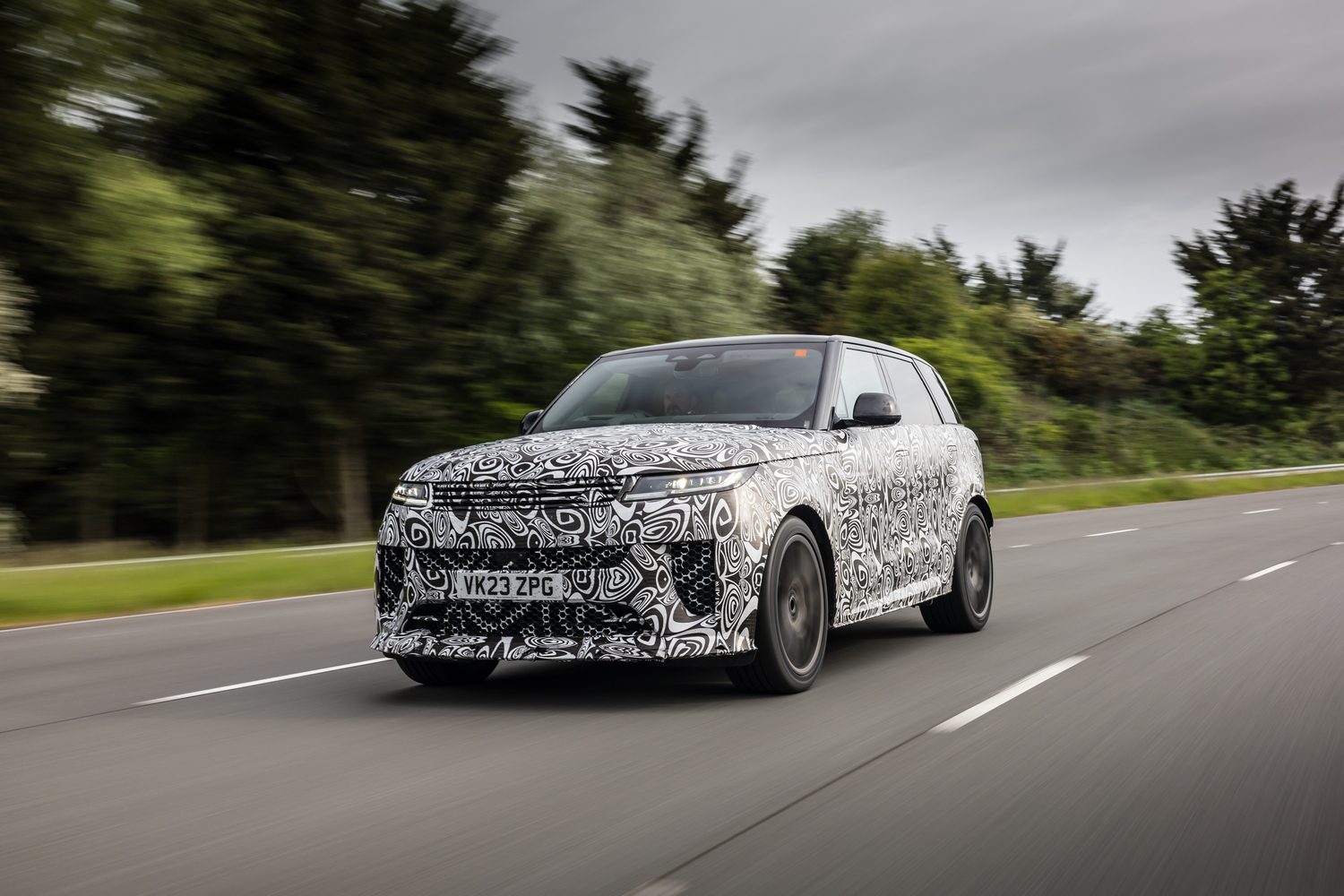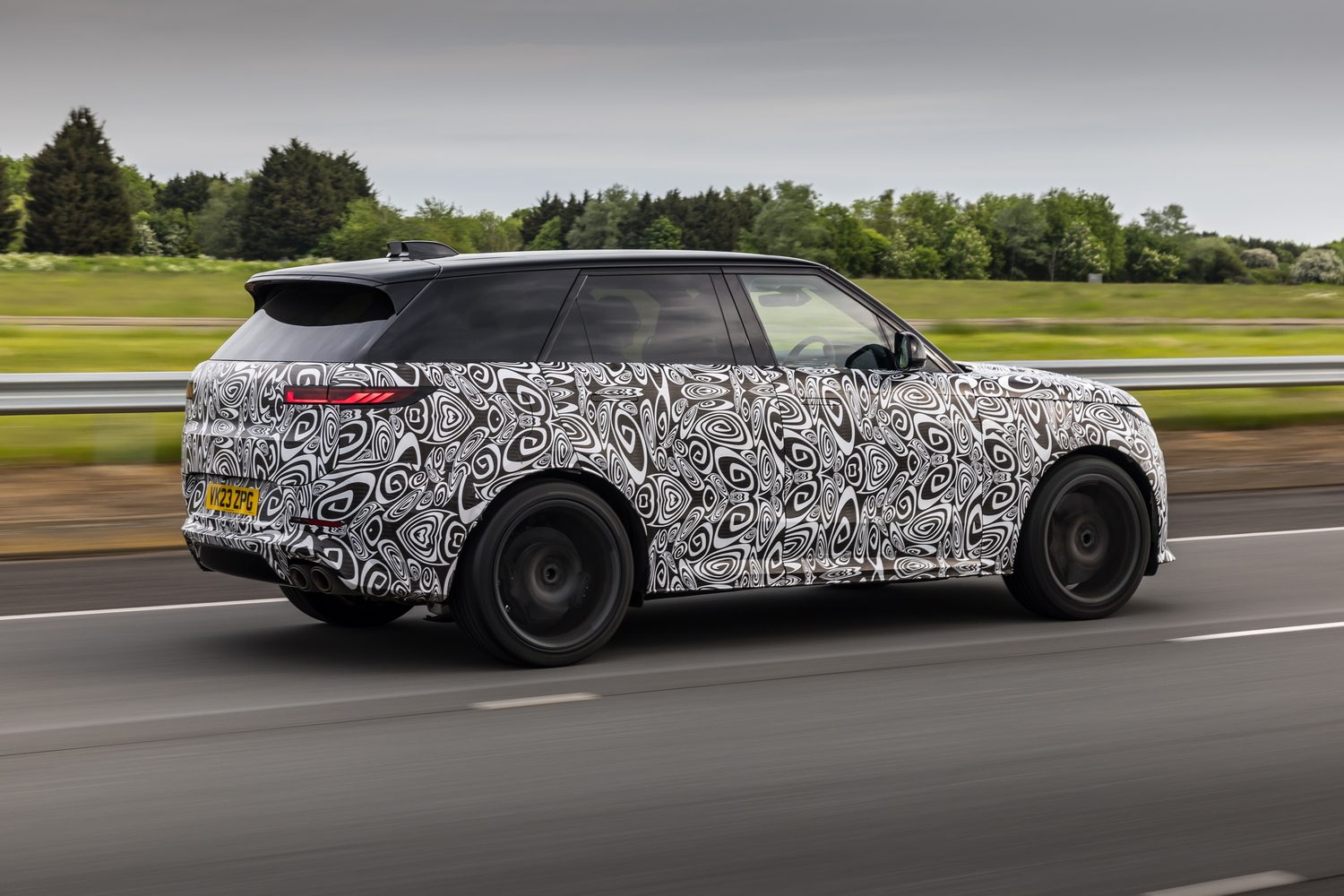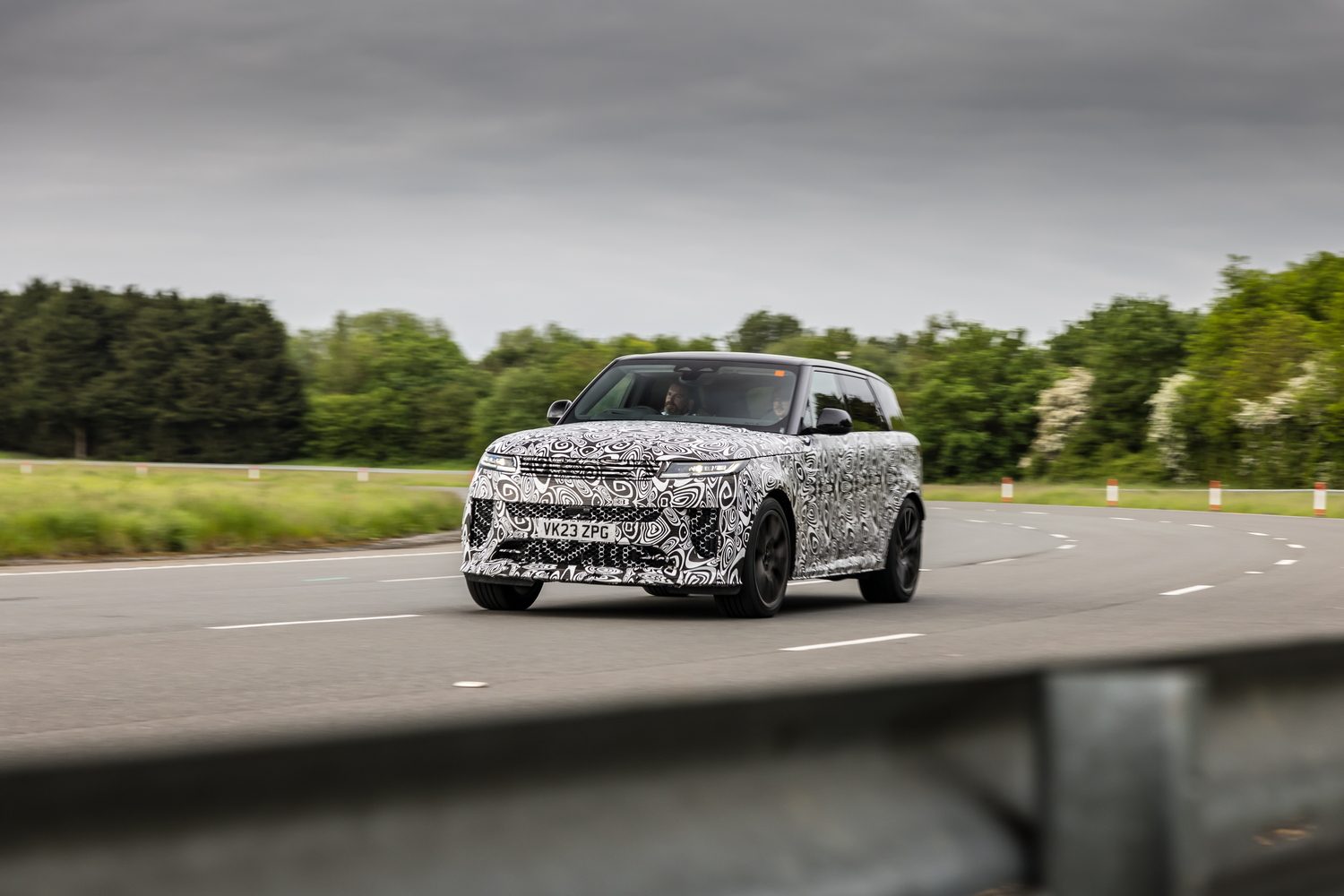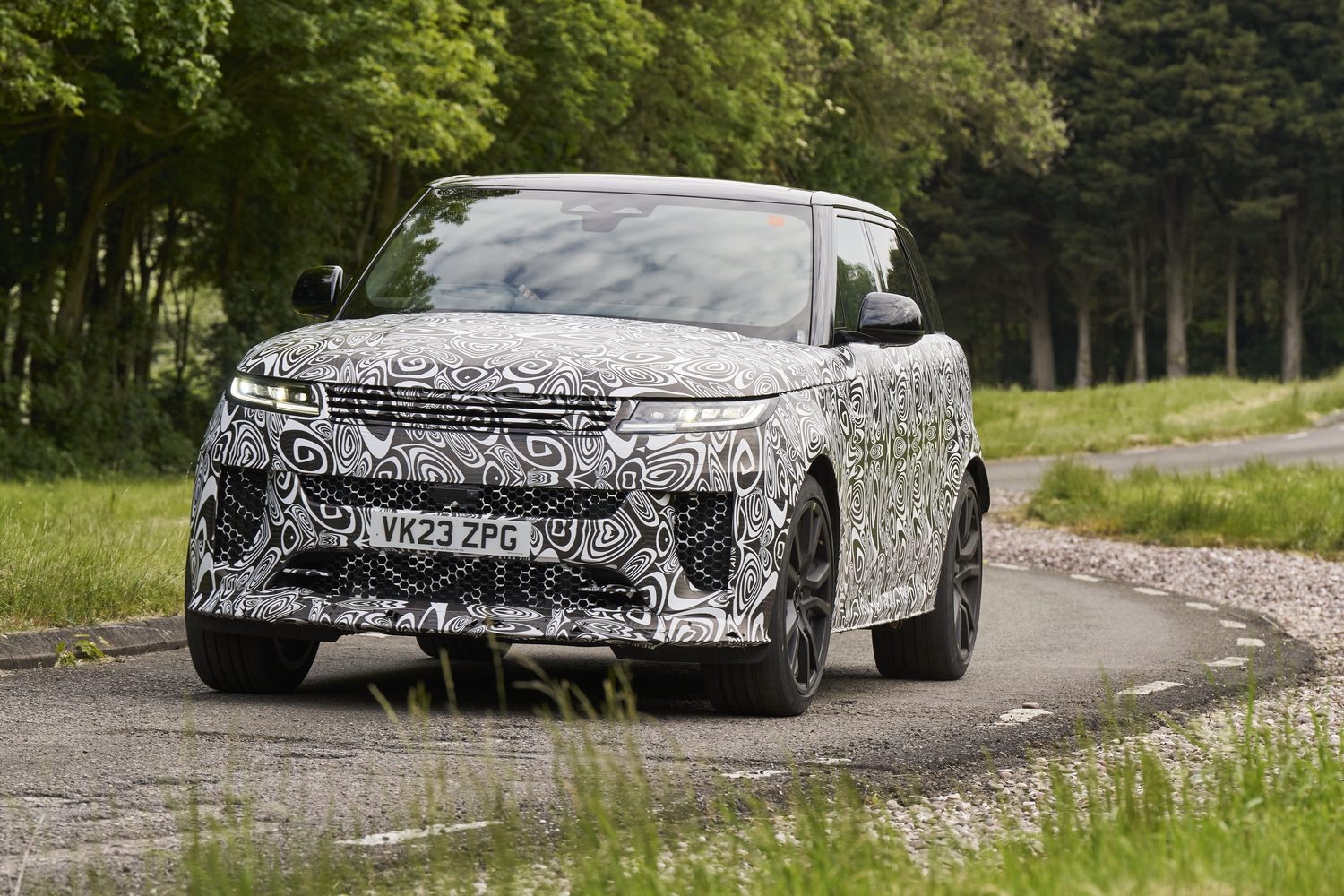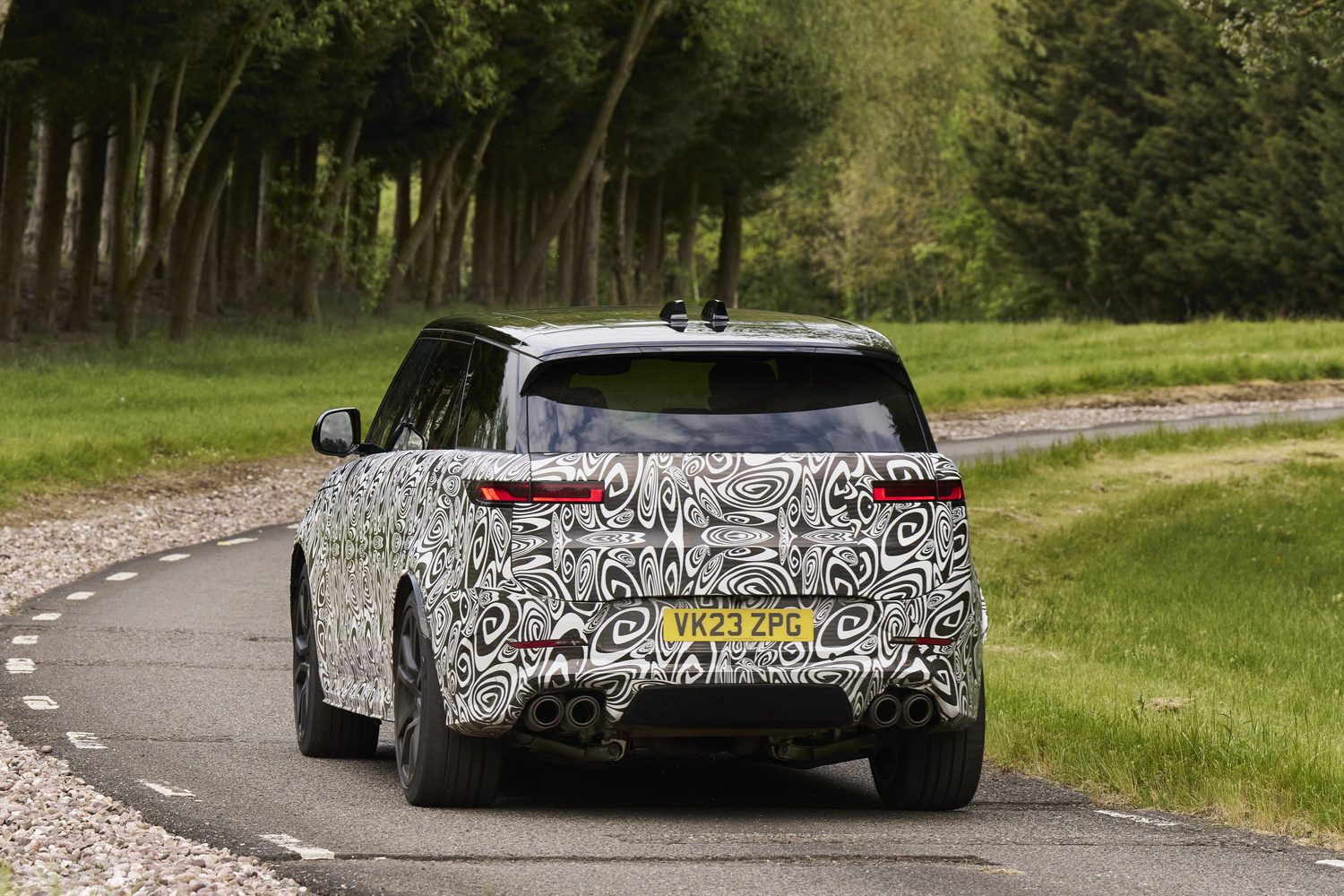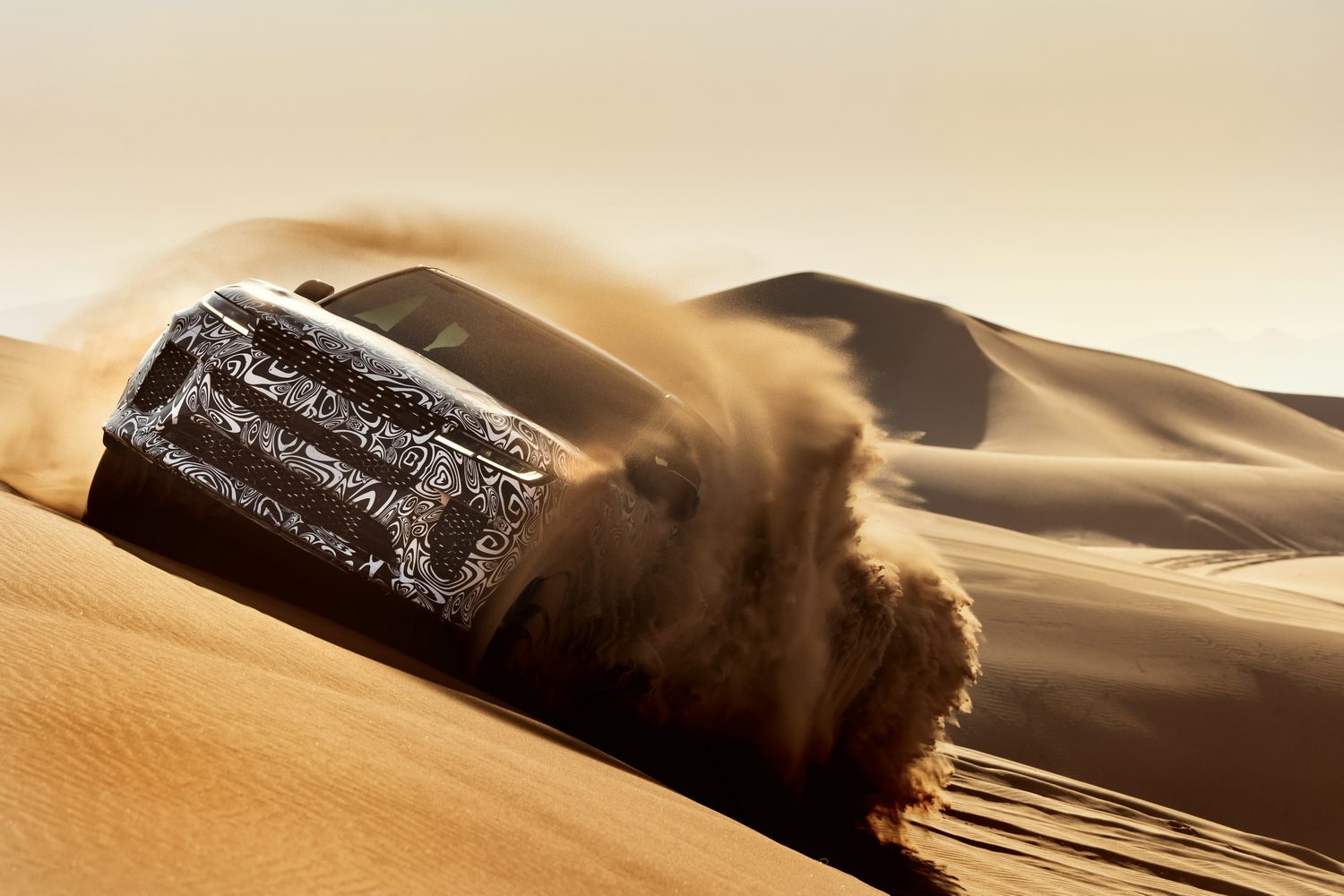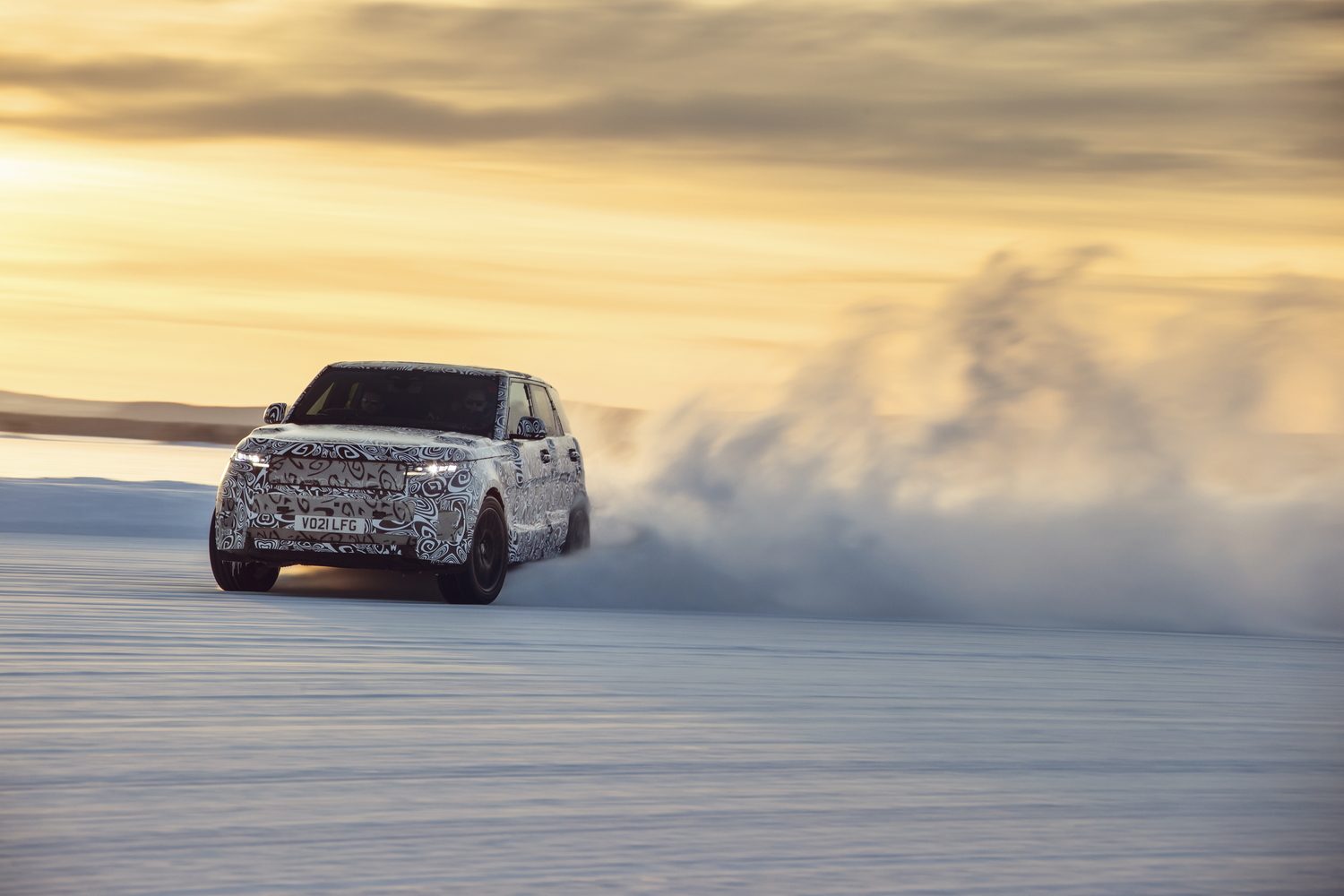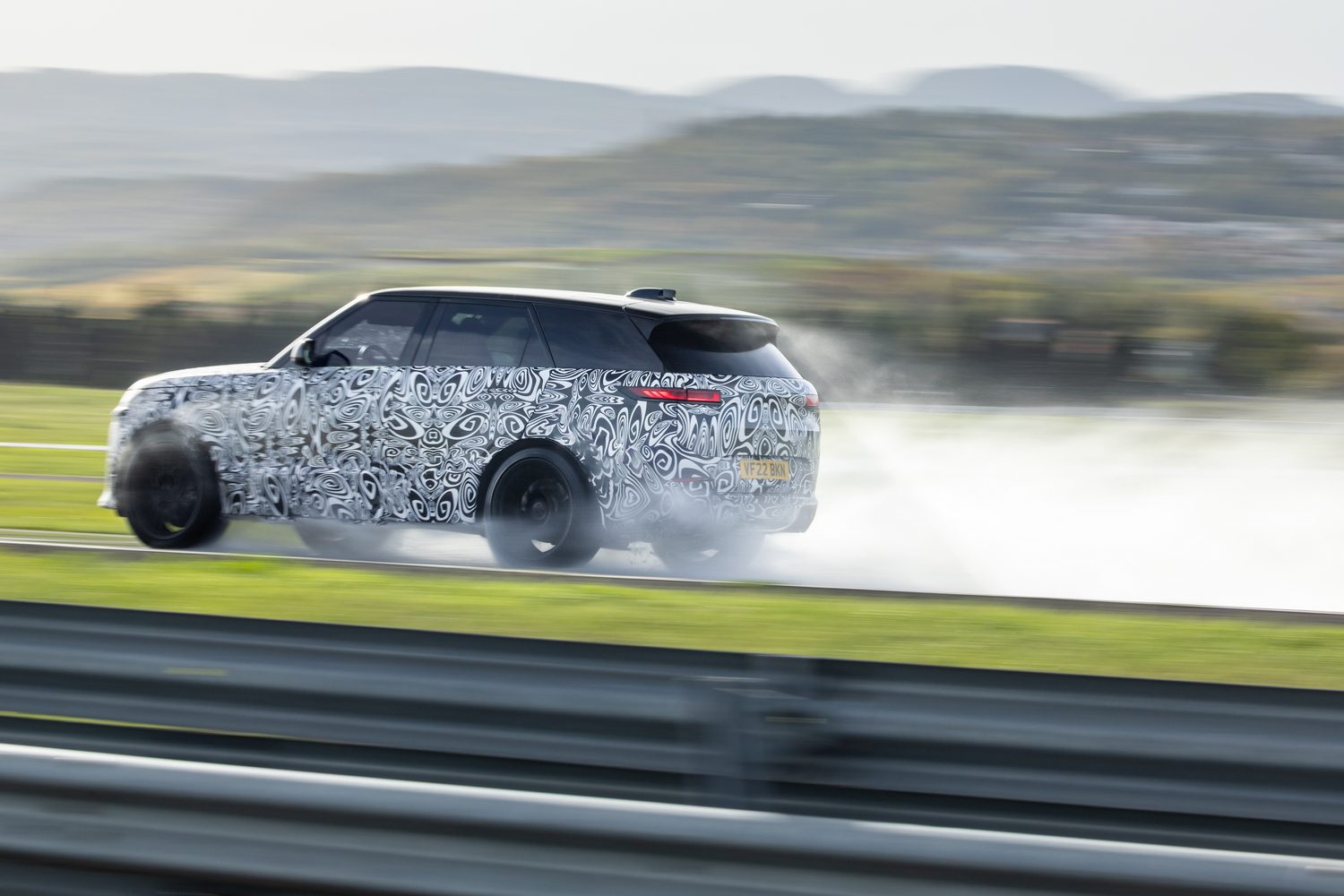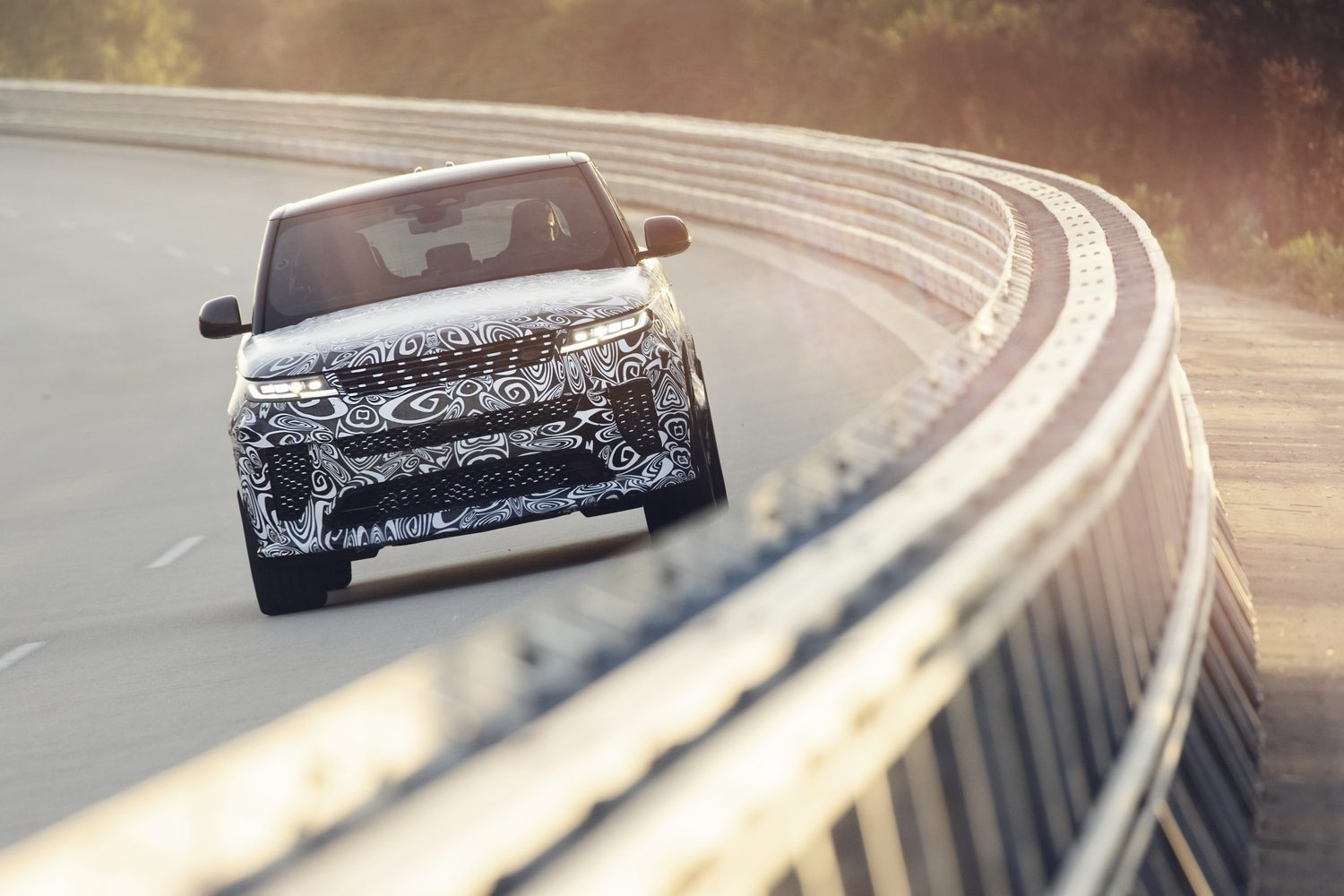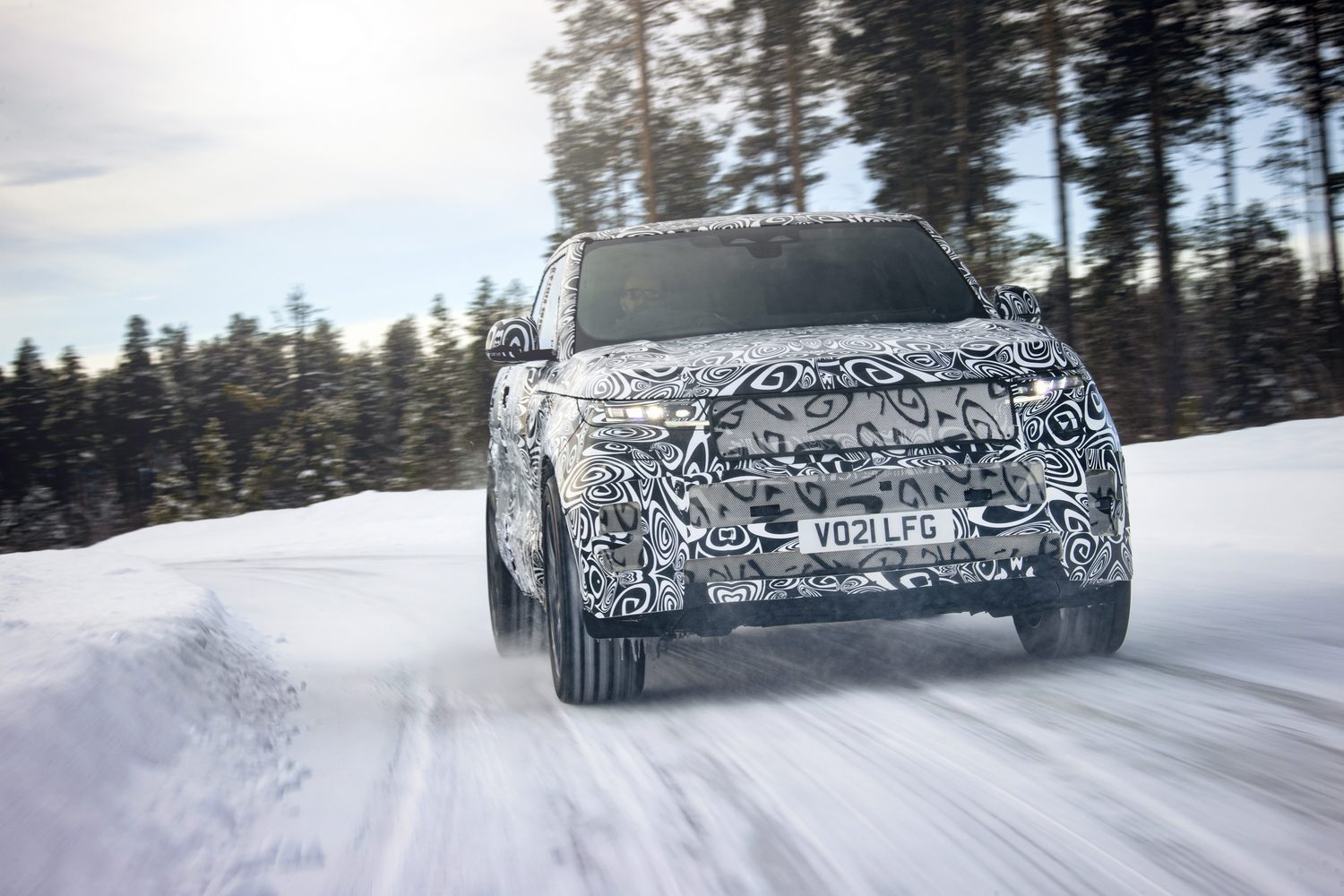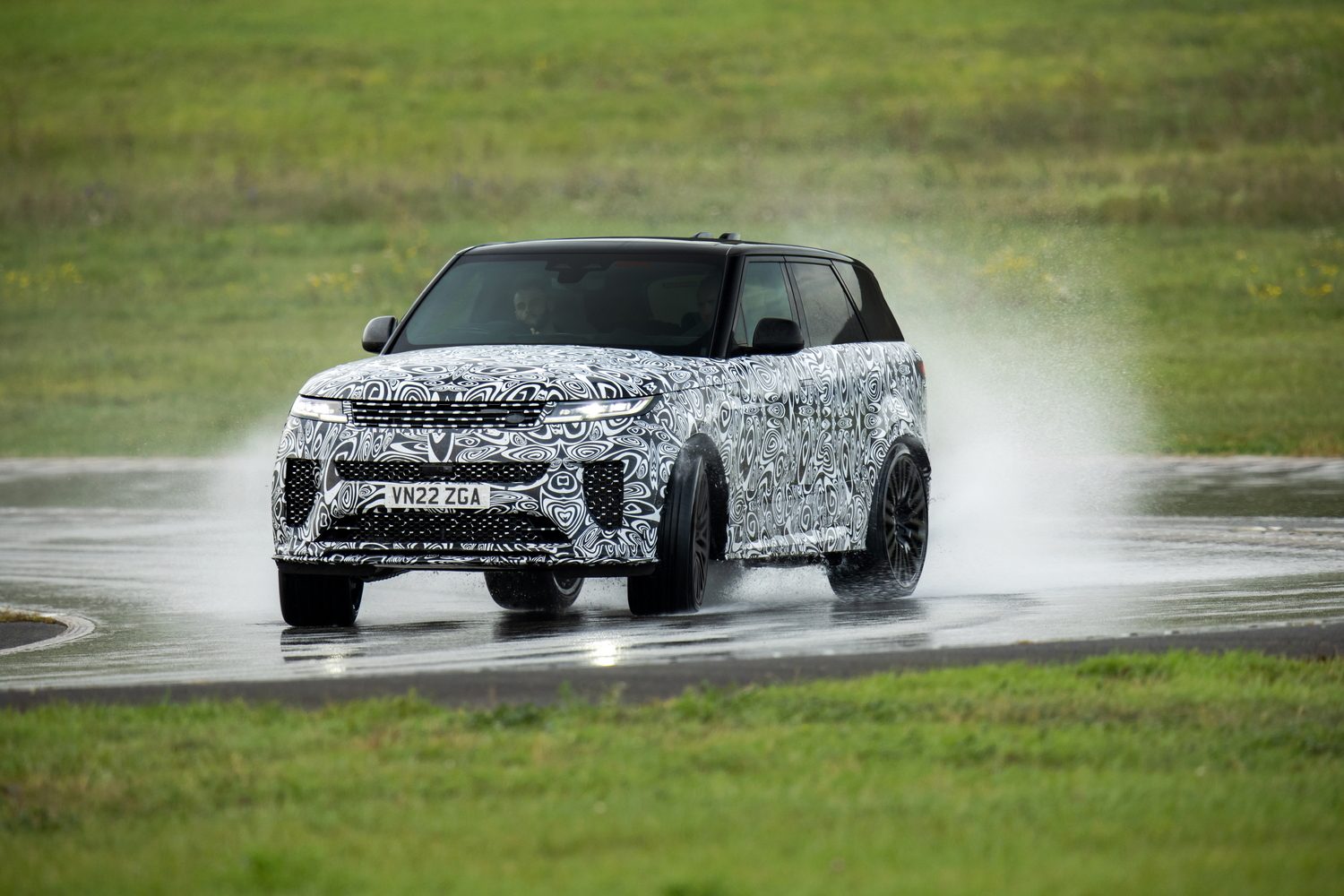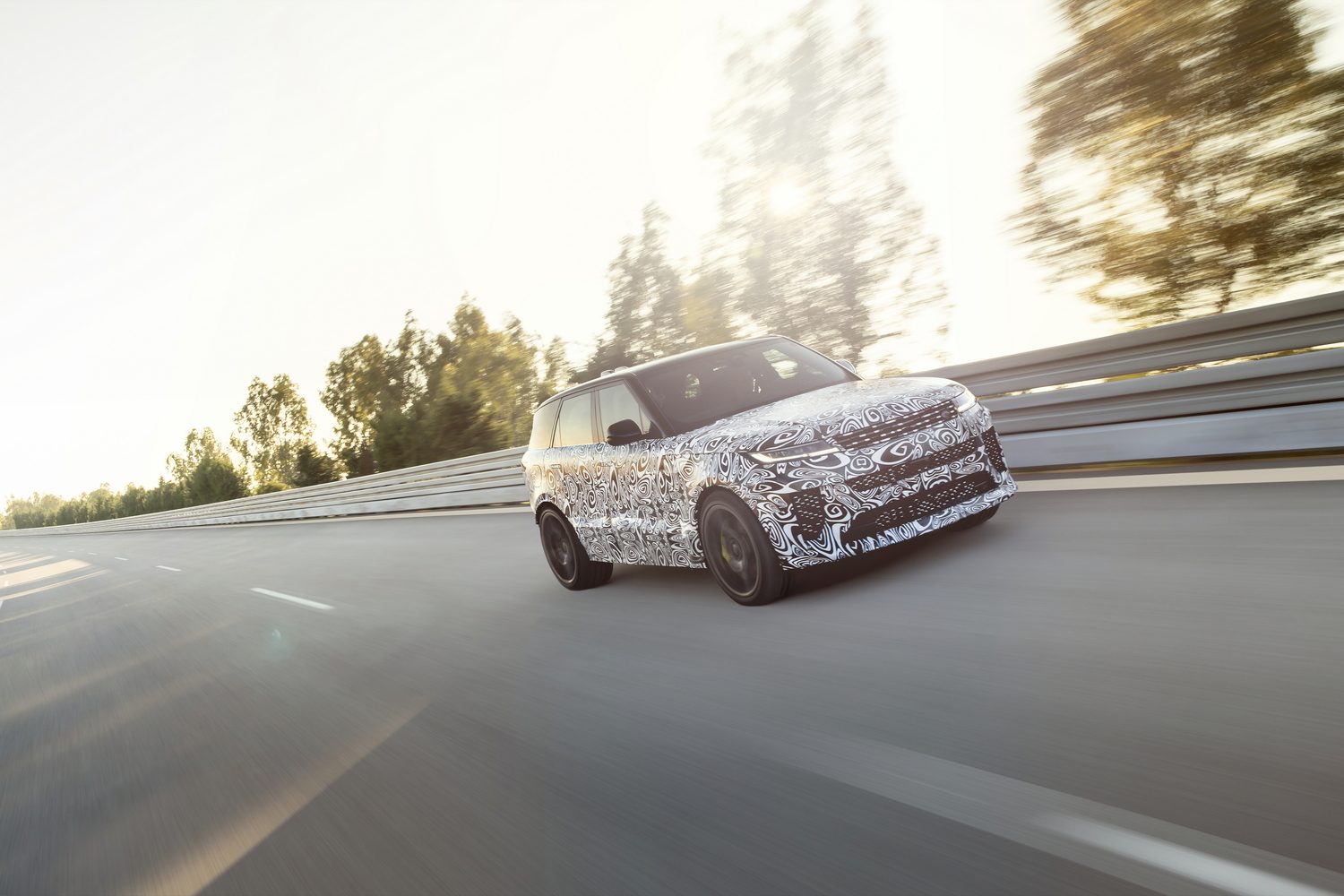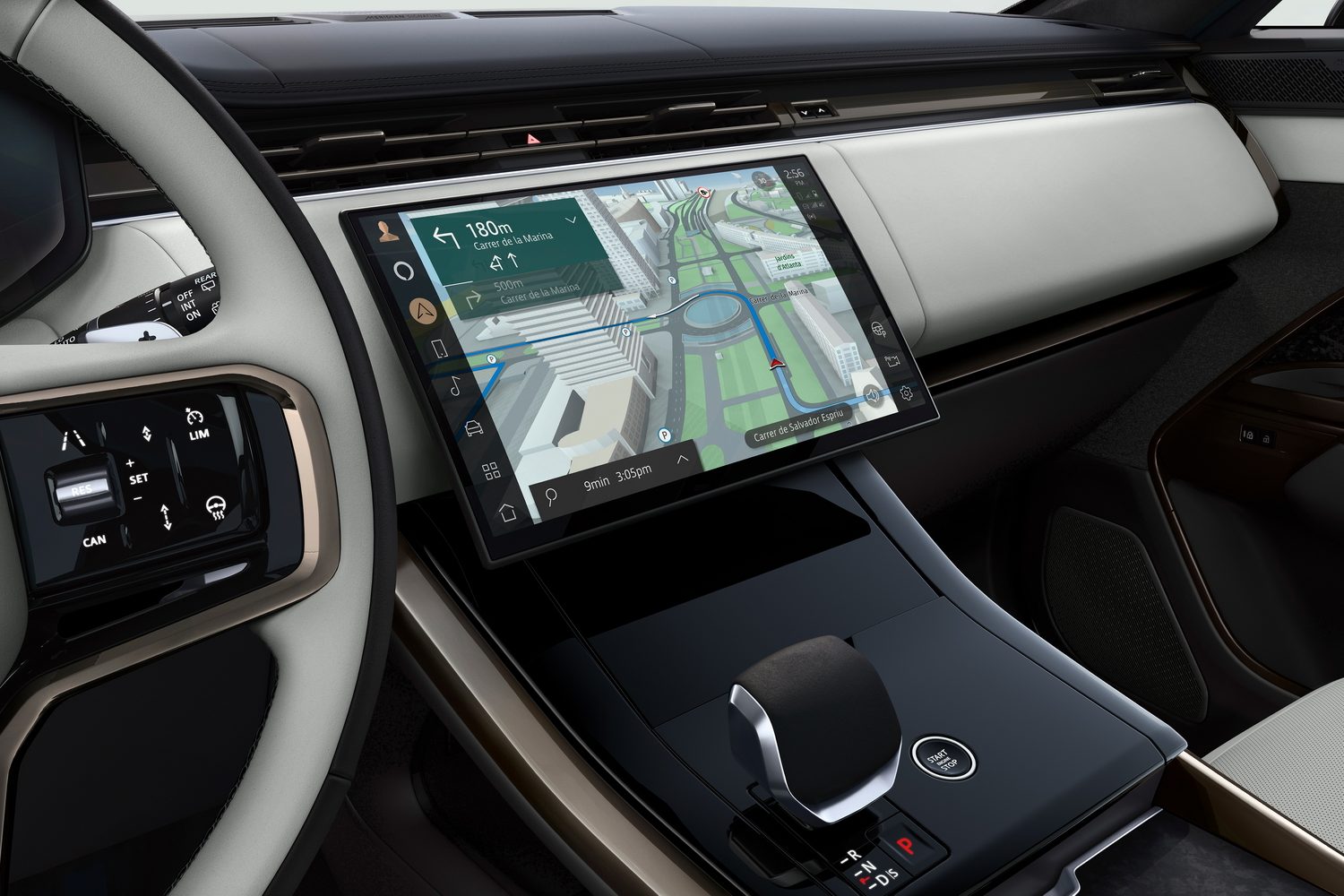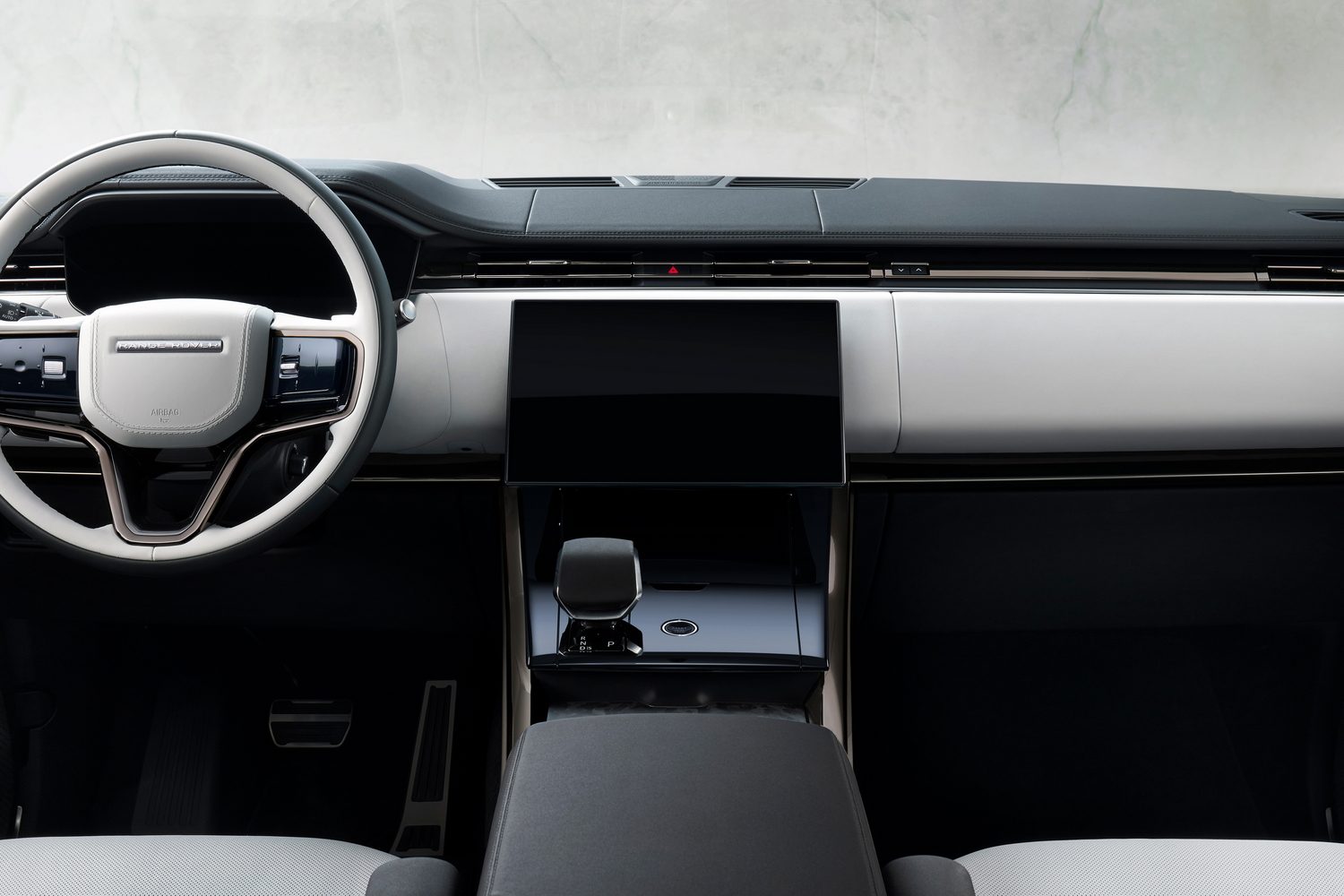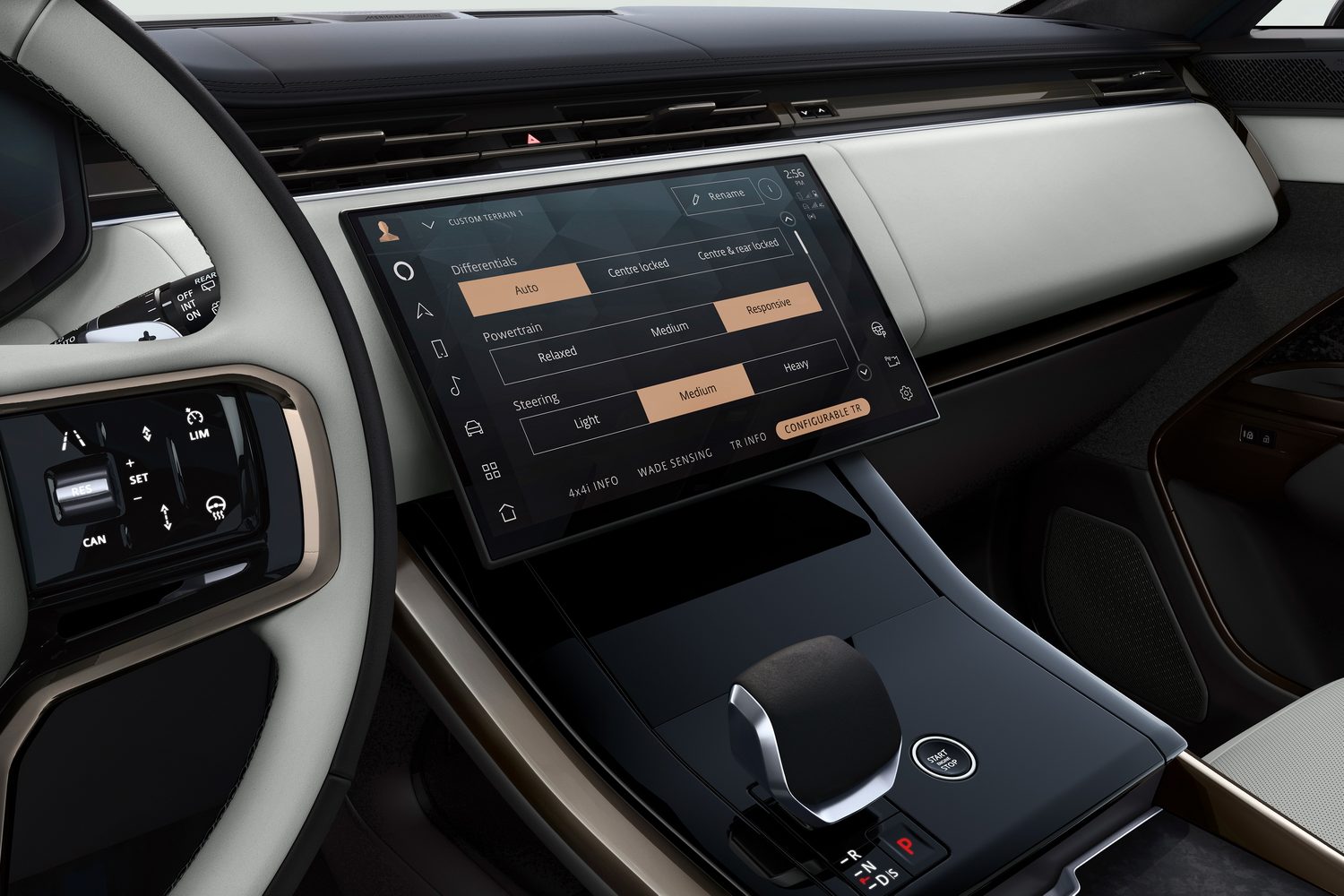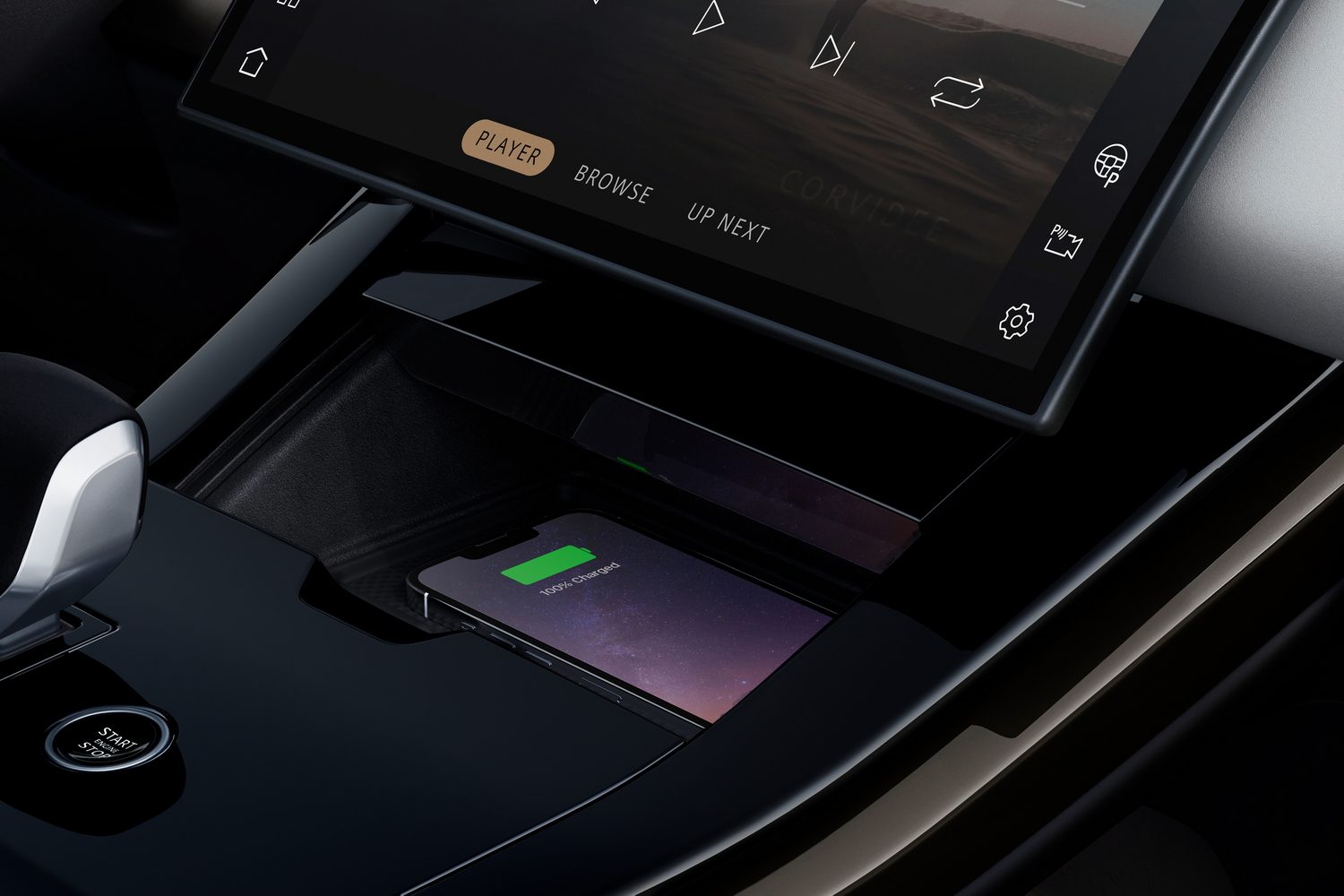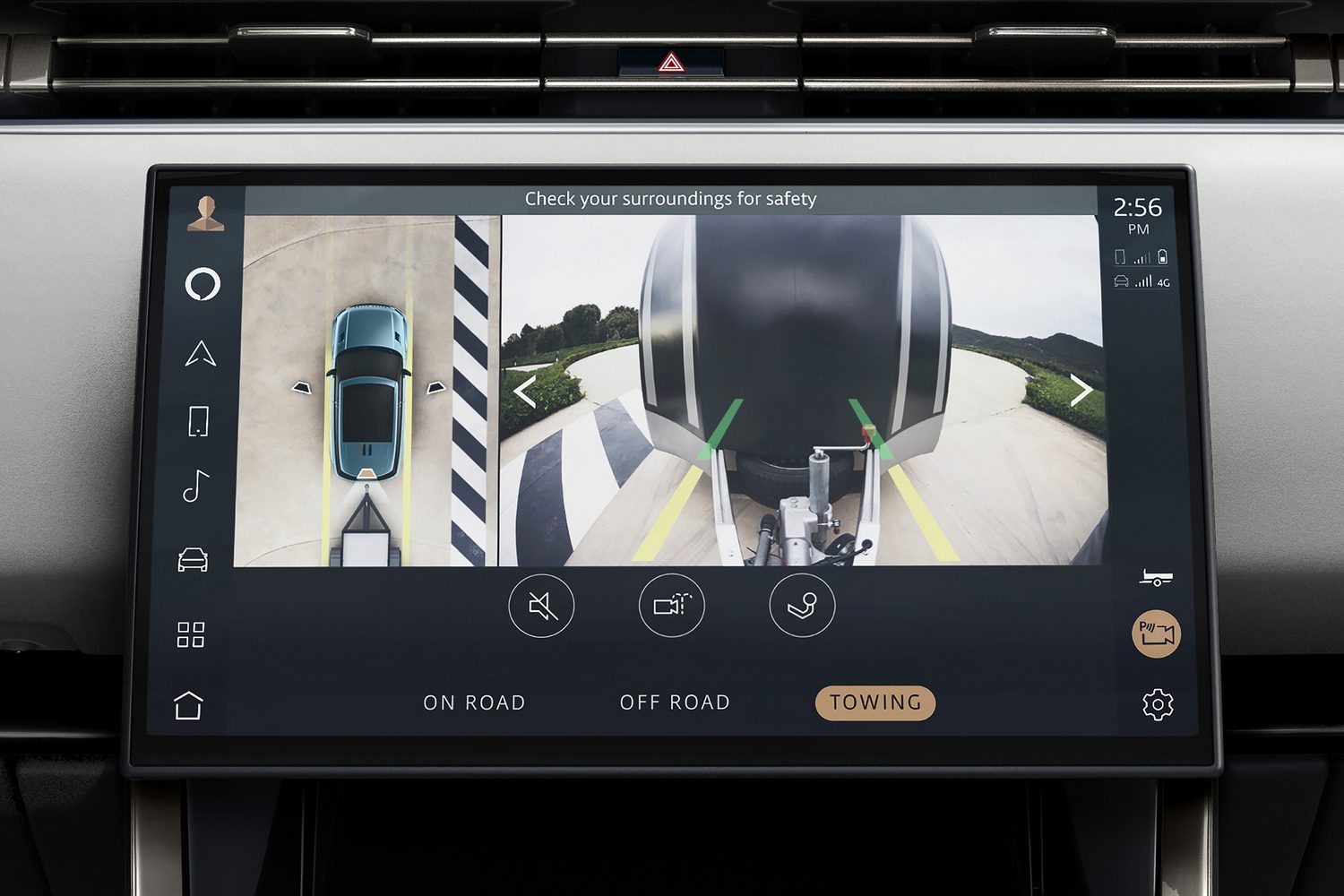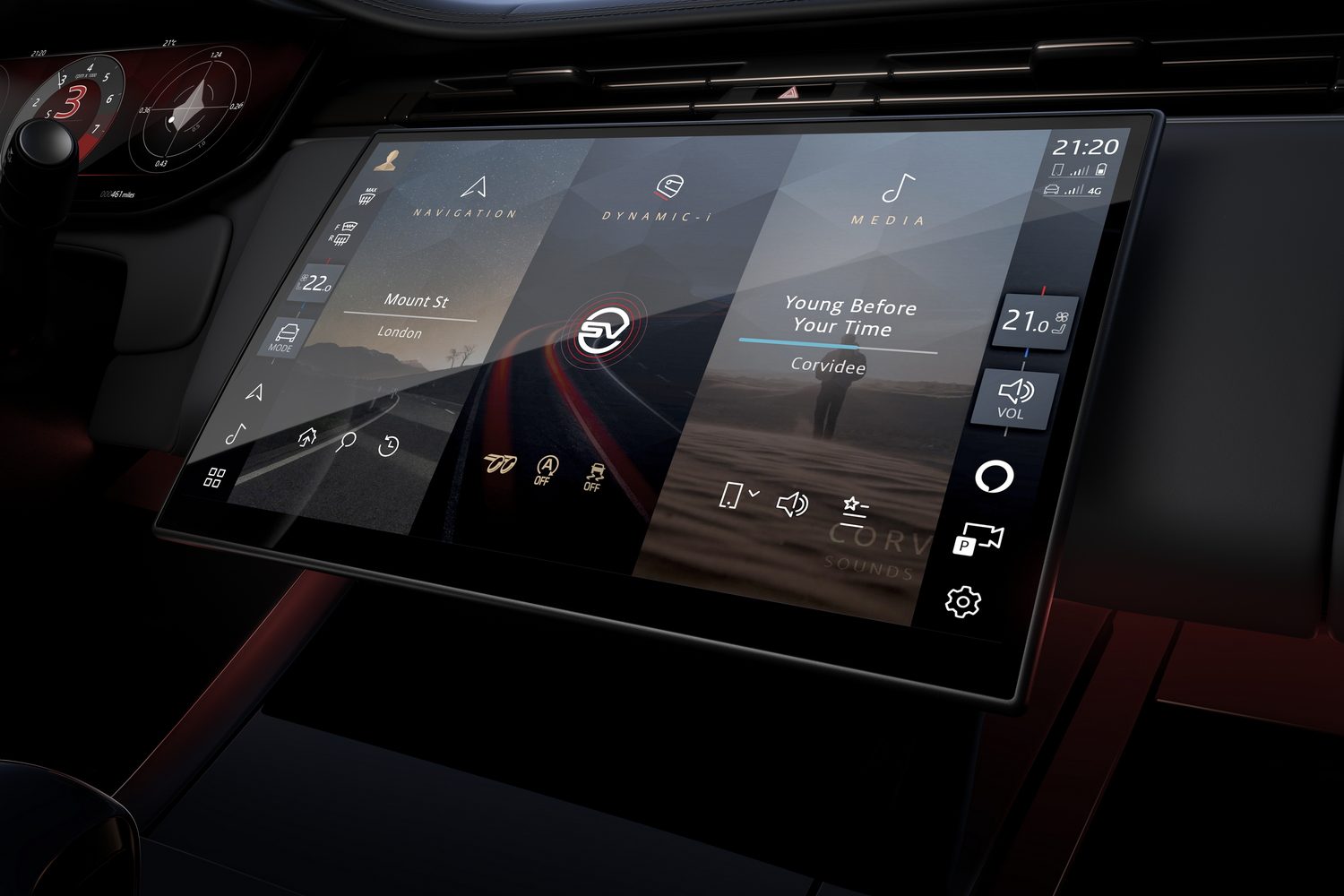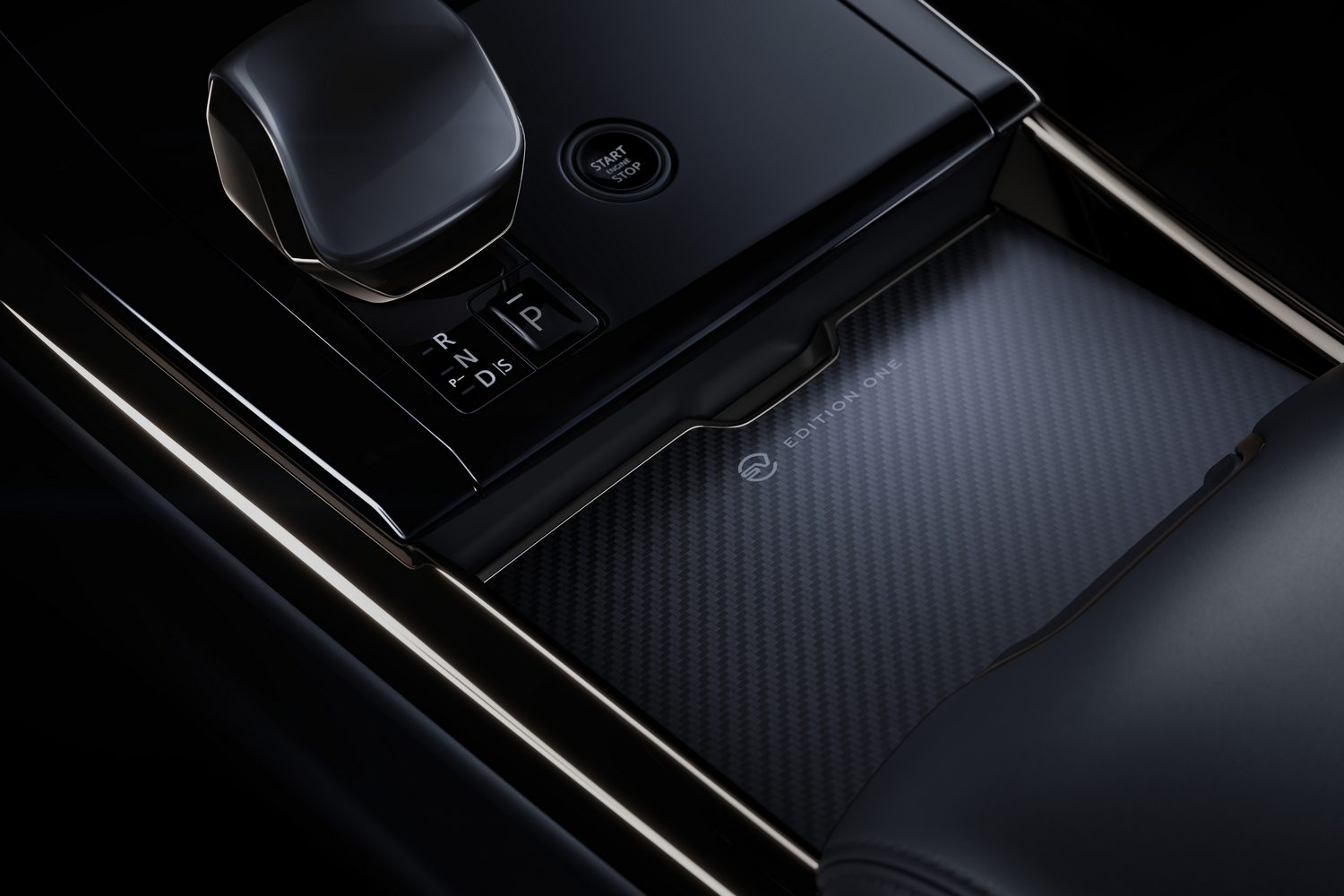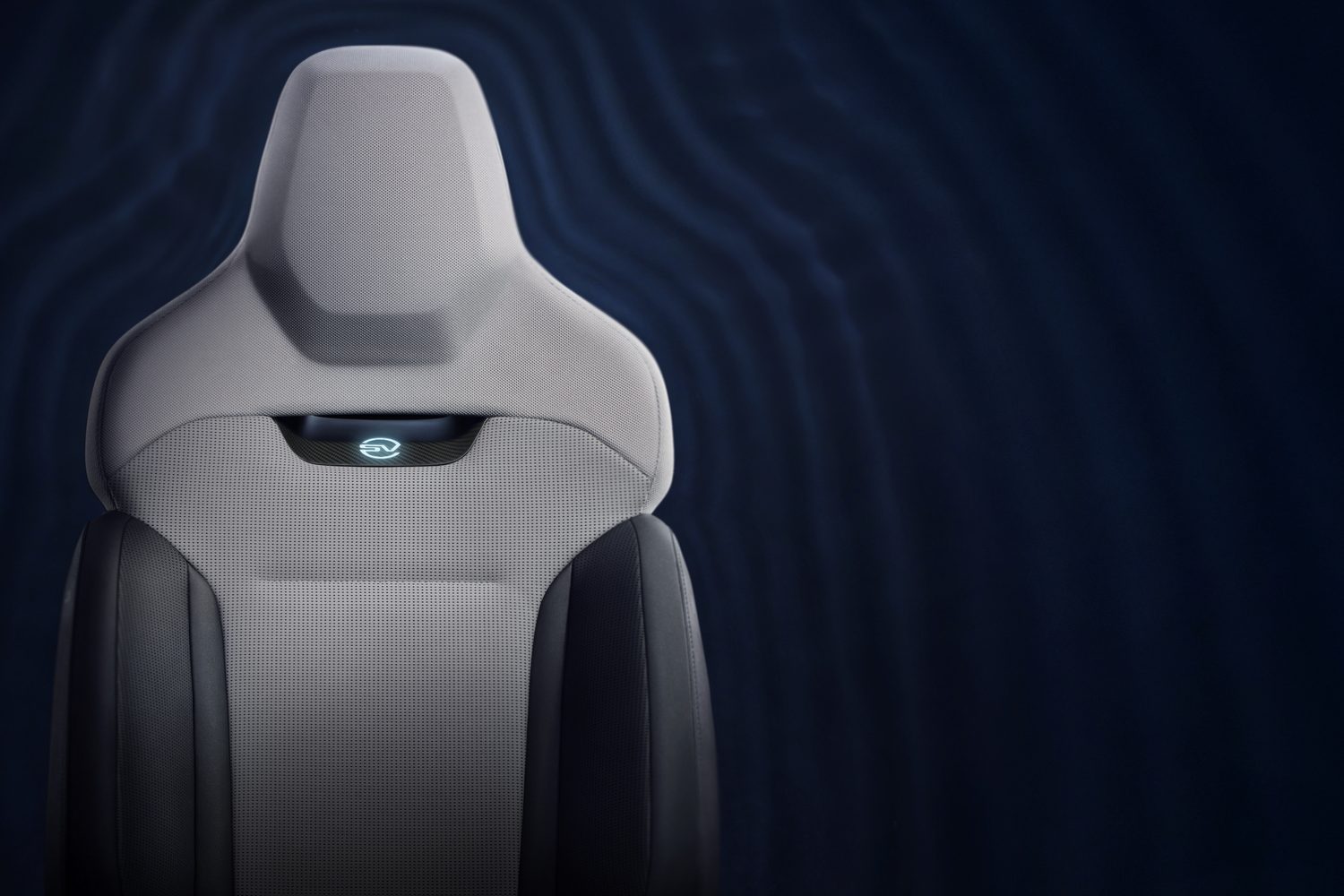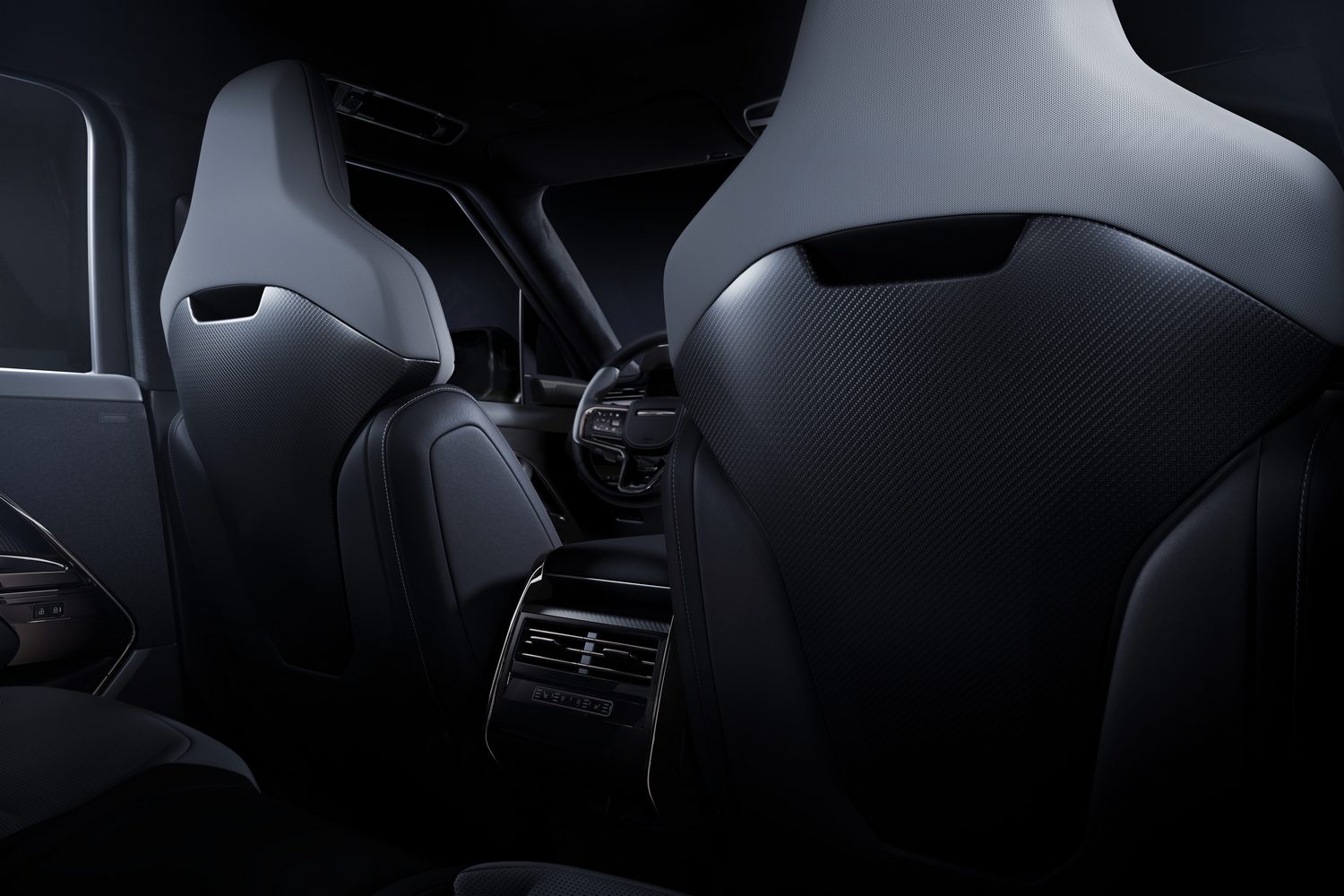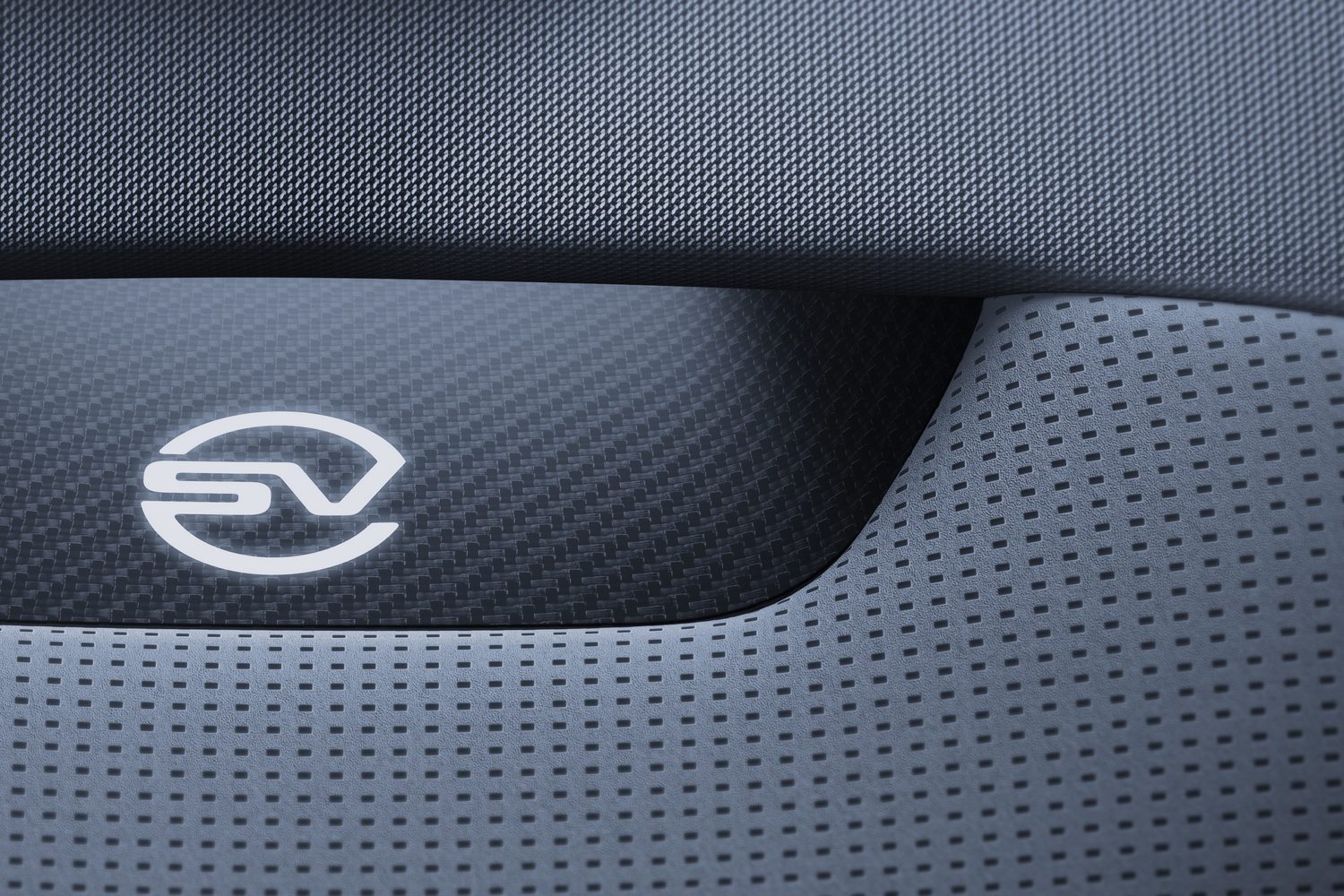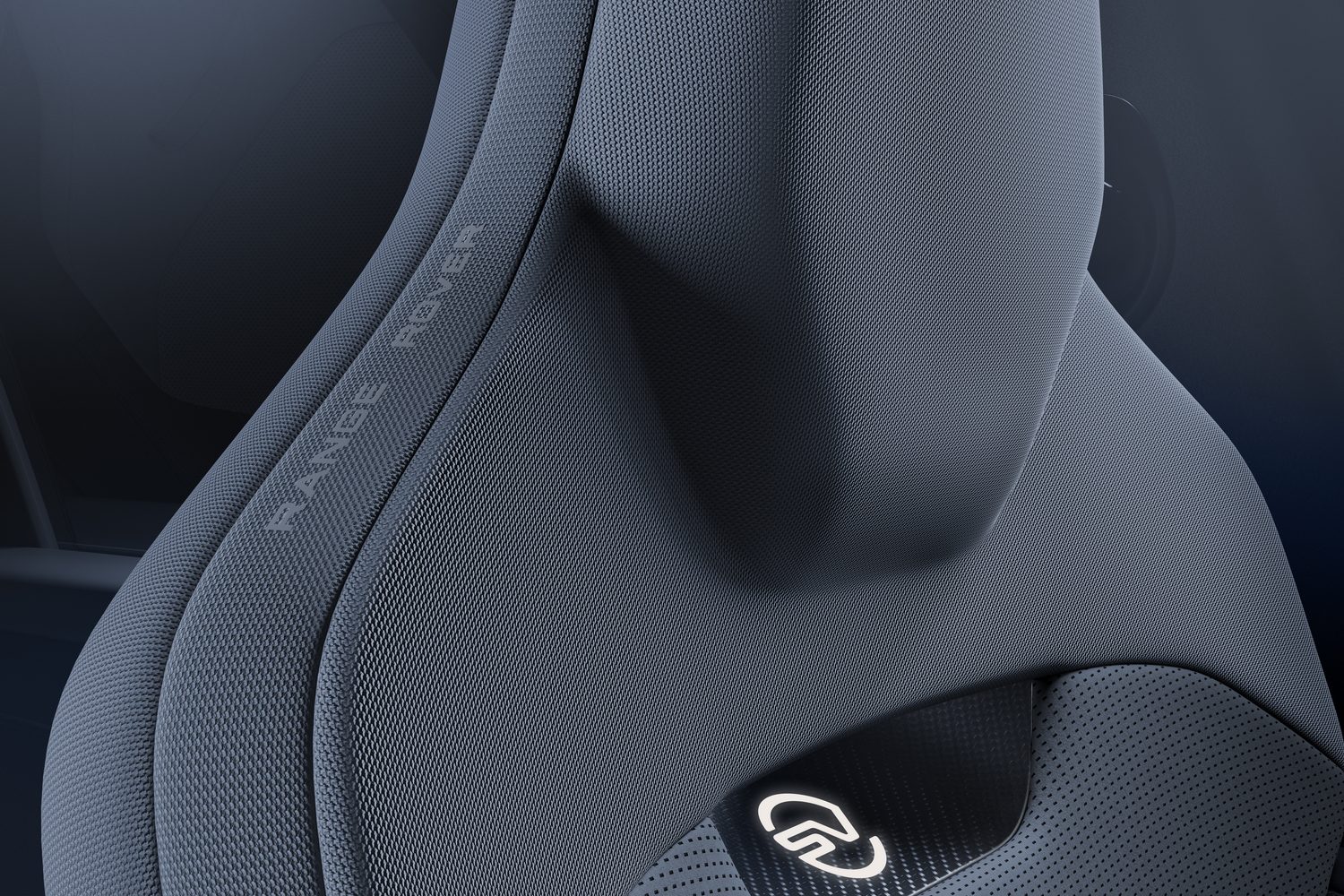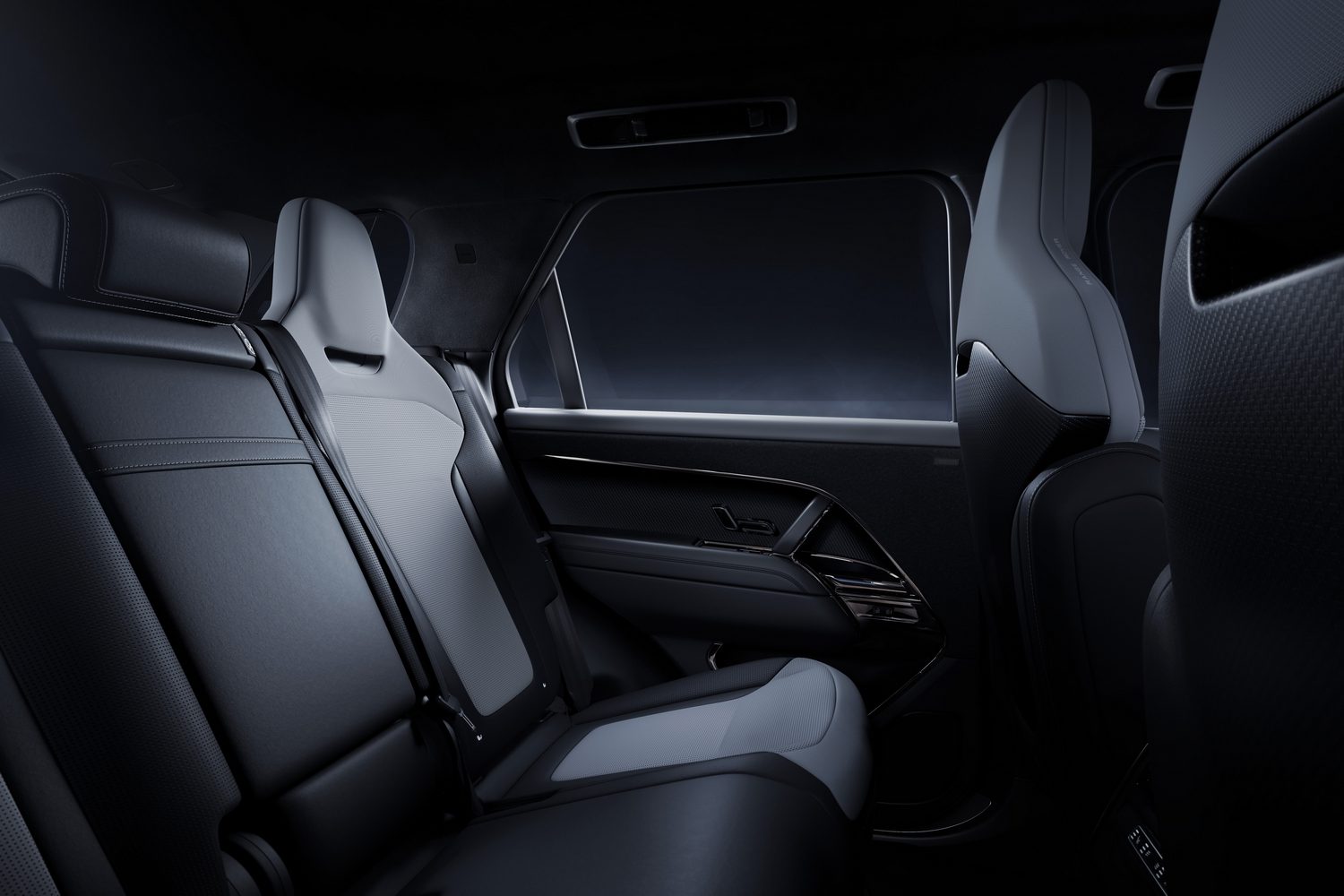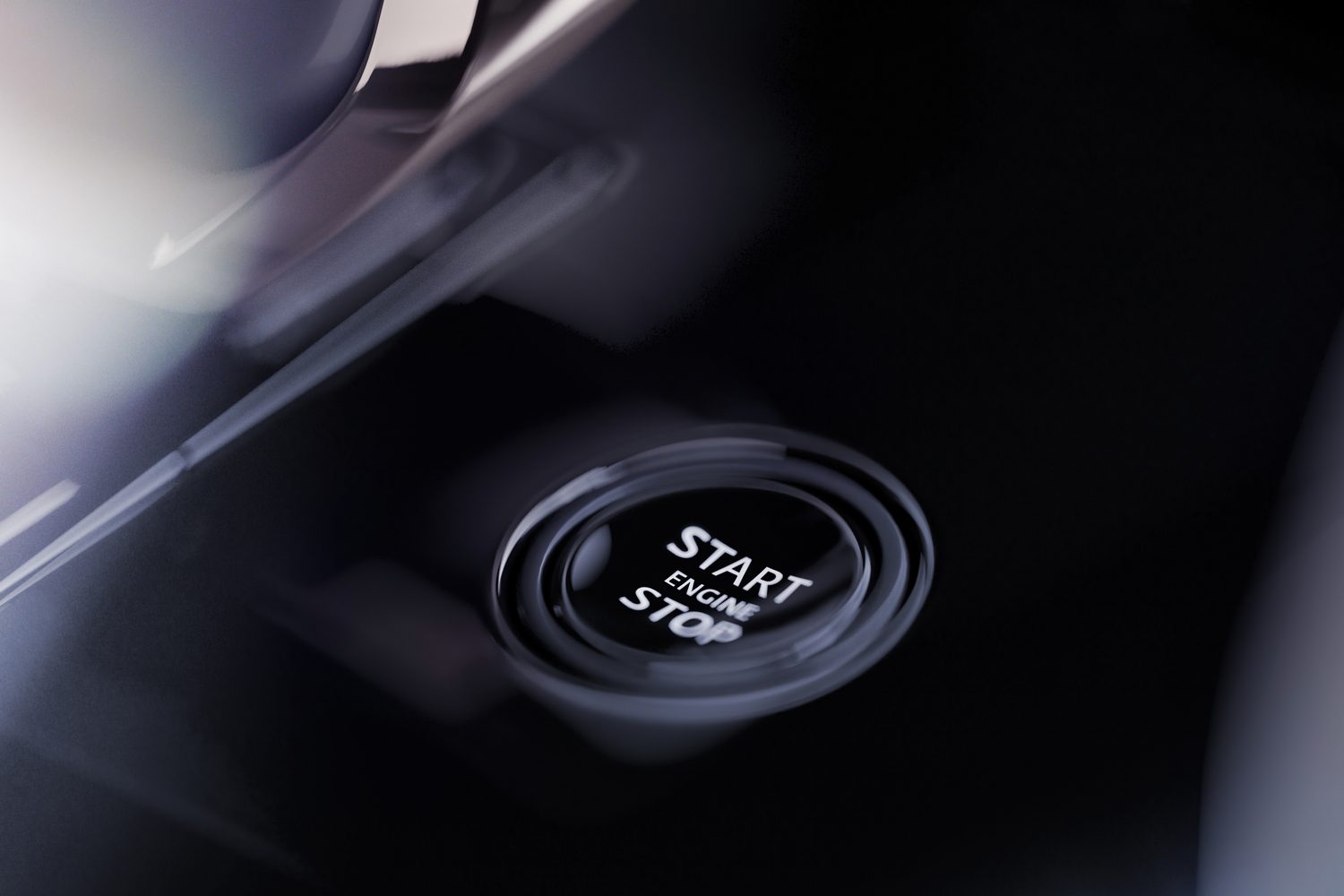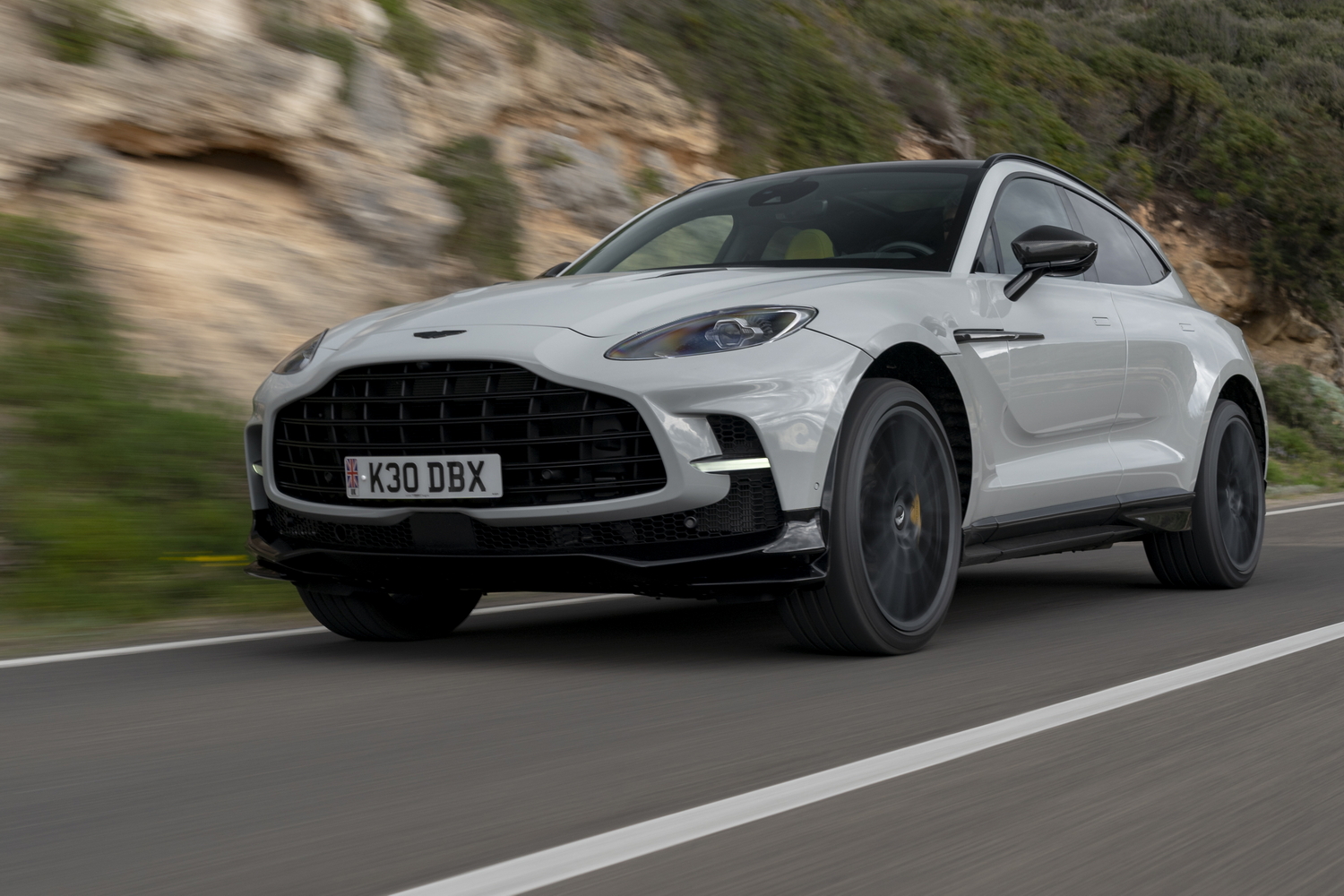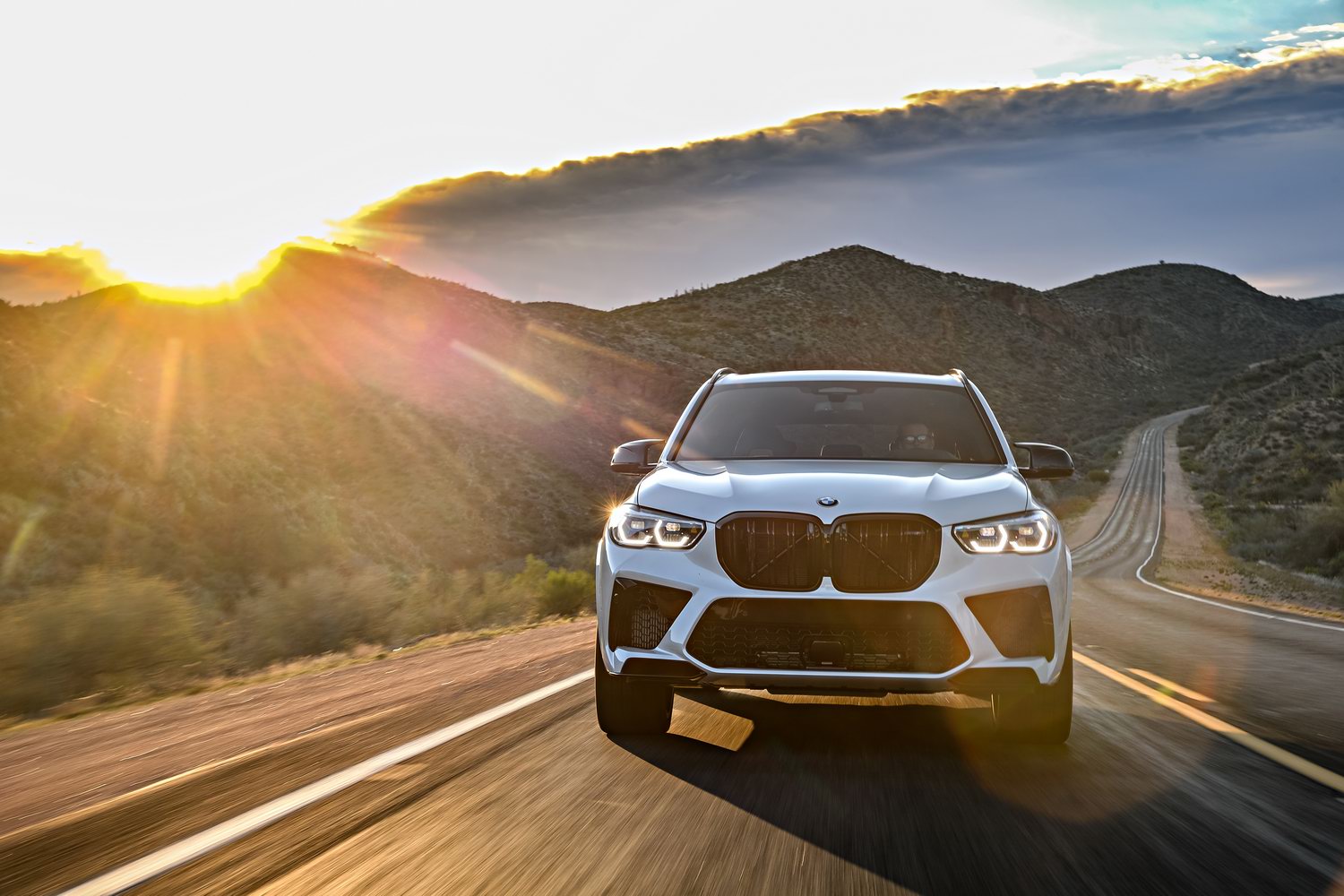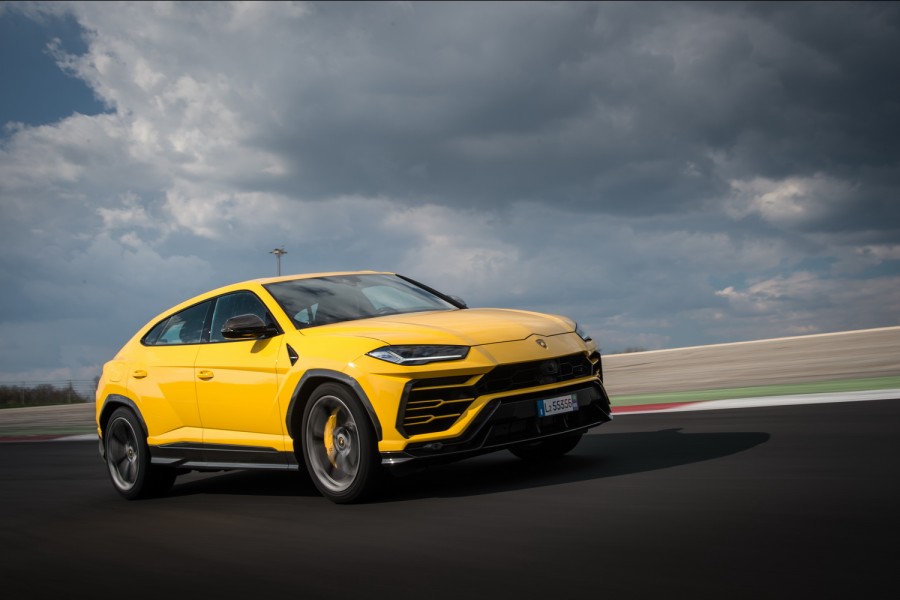The Range Rover Sport SV switches from the supercharged V8 of its SVR-badged predecessor to a smaller, twin-turbocharged V8 engine, yet gains a big increase in performance. Adding to that is an innovative new suspension setup that enhances body control and handling. We jump into the passenger seat to experience how it performs.
In the metal
Our passenger ride in the Range Rover Sport SV took place before the car's global debut in June, so you'll still see the car wearing its camouflage disguise in these images (though you can tap on the lead image to access the full gallery showing the finished product). Presence is one thing that isn't lacking in the new model, and that's thanks in part to the new suspension setup that sits the SV 10mm lower than the regular Sport. There are also massive 23-inch carbon-fibre wheels, which are themselves a highly impressive piece of engineering.
Lurking behind those rims are newly developed eight-piston brake calipers from Brembo. If the vivid yellow paint isn't to your liking, they can also be specified in other colours, but whichever hue you choose, they provide phenomenal stopping power.
The camouflage wrap hides a bulging carbon fibre bonnet and a bespoke front bumper design that helps channel more airflow into the engine and brakes and adds to the general airflow down the sides, too. As with the other Range Rover models, the door handles sit flush against the bodywork when locked - a further aero benefit - and the glass area is more uniform with the door frames than in previous generations.
The 'SV' treatment inside is subtle and primarily focuses on the seats and steering wheel. The SV logo on the seats illuminates when the car is unlocked, for example. It is more impressive at night and lets everyone nearby see you're driving an SV. The seats themselves have a sportier look than in the standard Range Rover Sport and are surprisingly thin given the amount of hardware packed into them beneath the upholstery.
Driving it
Much work has gone into tuning the chassis and handling characteristics of the Range Rover Sport SV, with development spanning almost five years. Its 4.4-litre turbocharged engine produces a significant 635hp and 750Nm of torque, and as we travel over the expansive JLR proving grounds at Gaydon in the UK, Ross Restell, Vehicle Dynamics Manager at Special Vehicle Operations (SVO), explains how harnessing that performance and making it usable was one of the project's priorities.
The engineering team targeted just 2.5 degrees of body roll at 1G of lateral acceleration in the more dynamic 'SV mode'. To achieve that, it developed the '6D Dynamics' suspension that replaces traditional mechanical anti-roll hardware with a fully hydraulic system. Split between two circuits, it operates at 53 bar of pressure and drastically reduces the amount of pitch and roll during more extreme driving conditions. However, this car is no bone-shaker. As we begin in the comfort setting, the car feels impressively comfortable. Even riding on the 23-inch carbon-fibre wheels, there are good levels of bump absorption. Nonetheless, a few prods of the accelerator pedal creates the predicted rise in bonnet angle by a handful of degrees as the torque is deployed to the massive 305-section tyres.
As we pound along the three-lane straight at Gaydon, Restell explains how this team changed the steering ratio, moving from a 17.5:1 ratio to 13.6:1 to provide a more linear feel that complements the rear-wheel steering. That means the driver can use less steering input while experiencing a more natural and predictable result. Lane changes at higher motorway speeds require less than ten degrees of steering angle, for example.
When we start to cycle through the different driving modes, the effect of the new suspension setup quickly becomes apparent. There is a clear firmness to the Sport setting, which you can begin to feel through the seat base, but the SV mode transforms the car's handling more obviously. Selectable via the touchscreen or through a dedicated button on the base of the steering wheel, this setting lowers the car a further 15mm (making that 25mm lower overall than the standard Range Rover Sport) and stiffens the hydraulic suspension to its maximum.
A standing start using the launch control system flings the Sport forward with only the slightest shift in body angle. The engine temporarily adds a further 50Nm of torque, bringing it to 800Nm, and 100km/h appears in only 3.8 seconds. From a pure engineering standpoint, it's nothing short of impressive; how flat and level the car remains while doing this is nothing short of spooky. That is the most significant thing owners of the previous Range Rover Sport SVR will notice.
A V8 tone booms through the cabin and the high-speed bends reveal phenomenal grip, more than anyone will ever require on the public road. Restell explains how he spent six months in the driving simulator focusing on tuning the roll centre height of the car.
The rougher roads around the handling circuit, specifically designed to unsettle a car, do little to upset and delay the SV's progress. The suspension seems to operate in a way that makes it feel as if all four wheels are magnetically drawn to the surface by a great force. Maximising the amount of surface contact between ground and tyre reduces any potential performance losses. From point to point, it's obvious, even from the passenger seat, how much of a leap forward in body control and handling this new model has taken compared to its predecessor.
What you get for your money
The entire allocation of the Range Rover Sport SV Edition One models have already been sold, representing the first full year of production. Currently, there is no official Irish price listed for the standard Sport SV. There is a high level of standard equipment, but buyers can add more, including seats that feature vibro-acoustic technology so you can feel the sounds of what you're listening to on the stereo. Several upholstery options are also available, including those made from traditional wools or recycled materials.
Summary
Our first taste of the new Range Rover Sport SV reveals an SUV that is more than merely a candidate for best Top Tumps card, but one that takes its performance and makes more of it accessible through sophisticated suspension technology. Yes, it's a niche product, especially in the Irish market, but it showcases some impressive technology that's certain to influence future models and highlights the engineering talent that exists in JLR and its Special Vehicle Operations.

